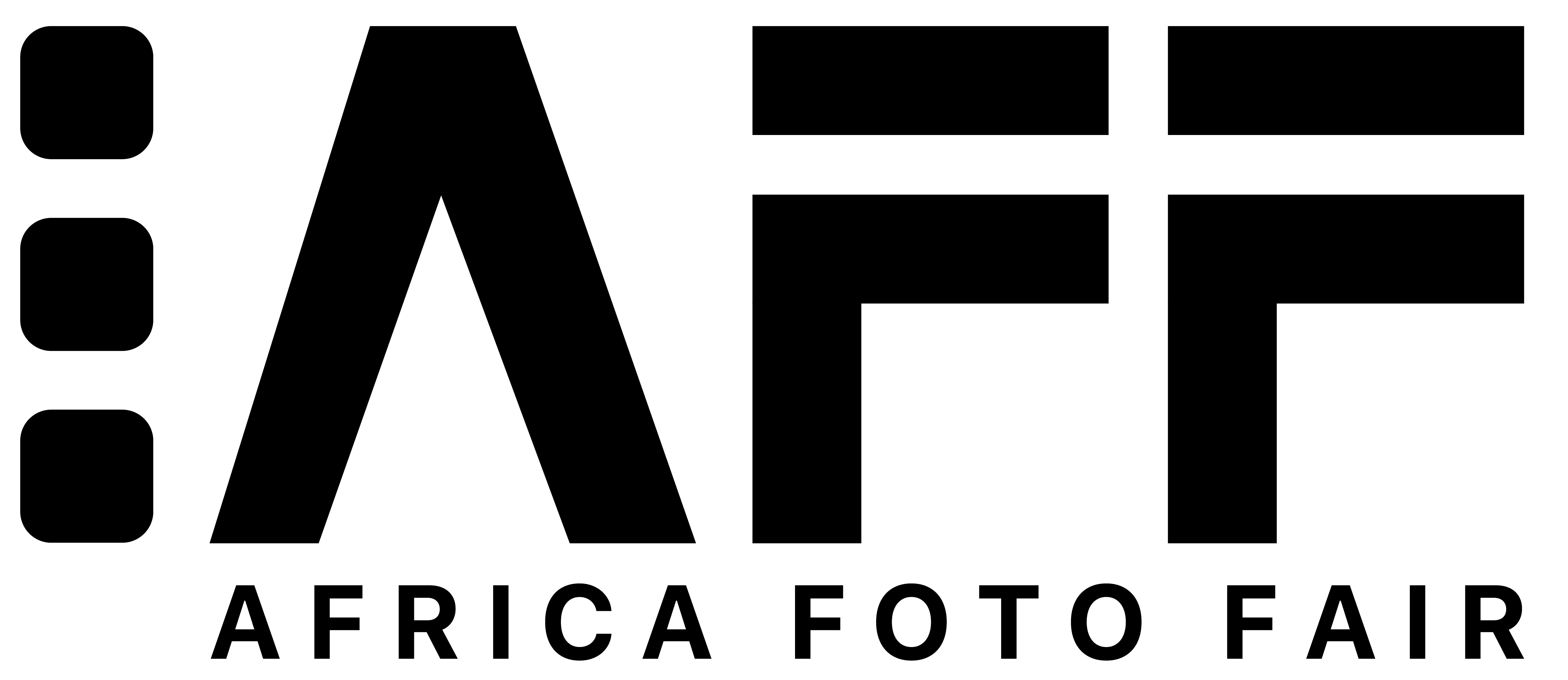Exhibiting Photographers
Browse exhibiting photographers from Africa.
Exhibiting Photographers
Browse exhibiting photographers from africa
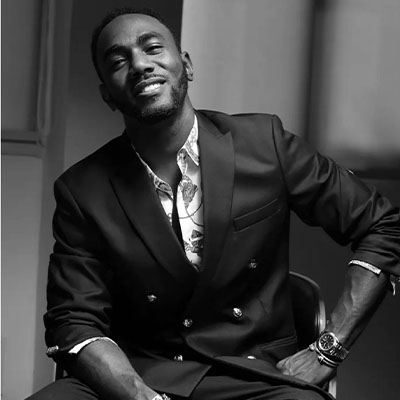
Joël Williams
Côte d'Ivoire



Joël Williams
Côte d'Ivoire
When the unexpected meets the beautiful
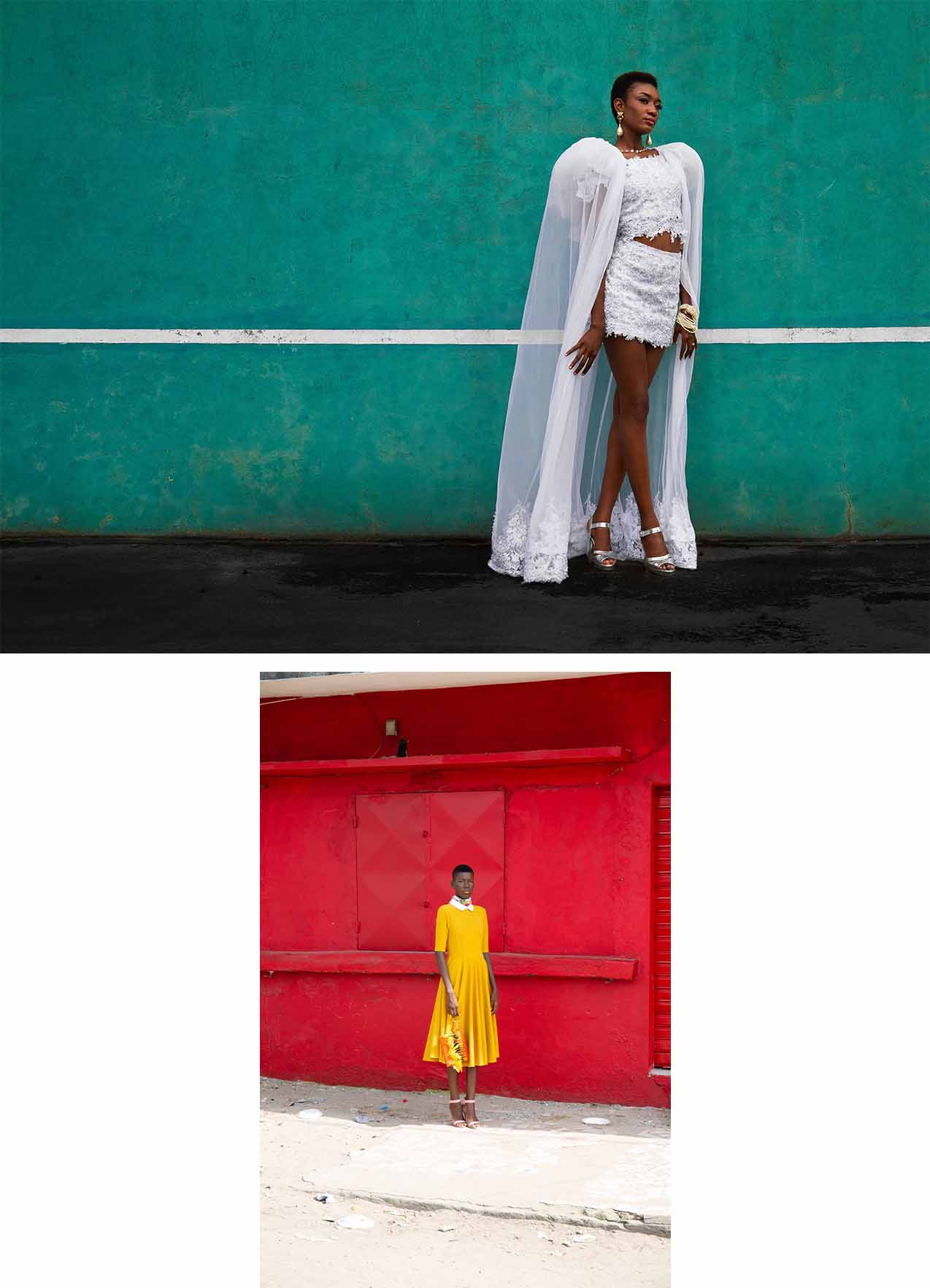

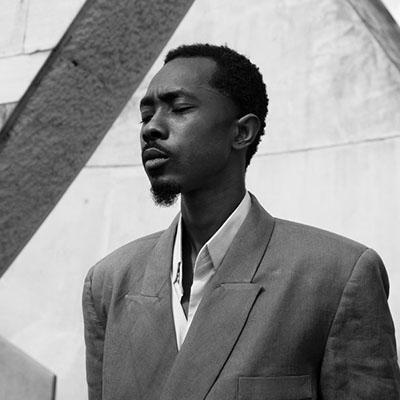


Kader Diaby
Côte d’Ivoire,



Kader Diaby
Côte d’Ivoire,
Série Miria
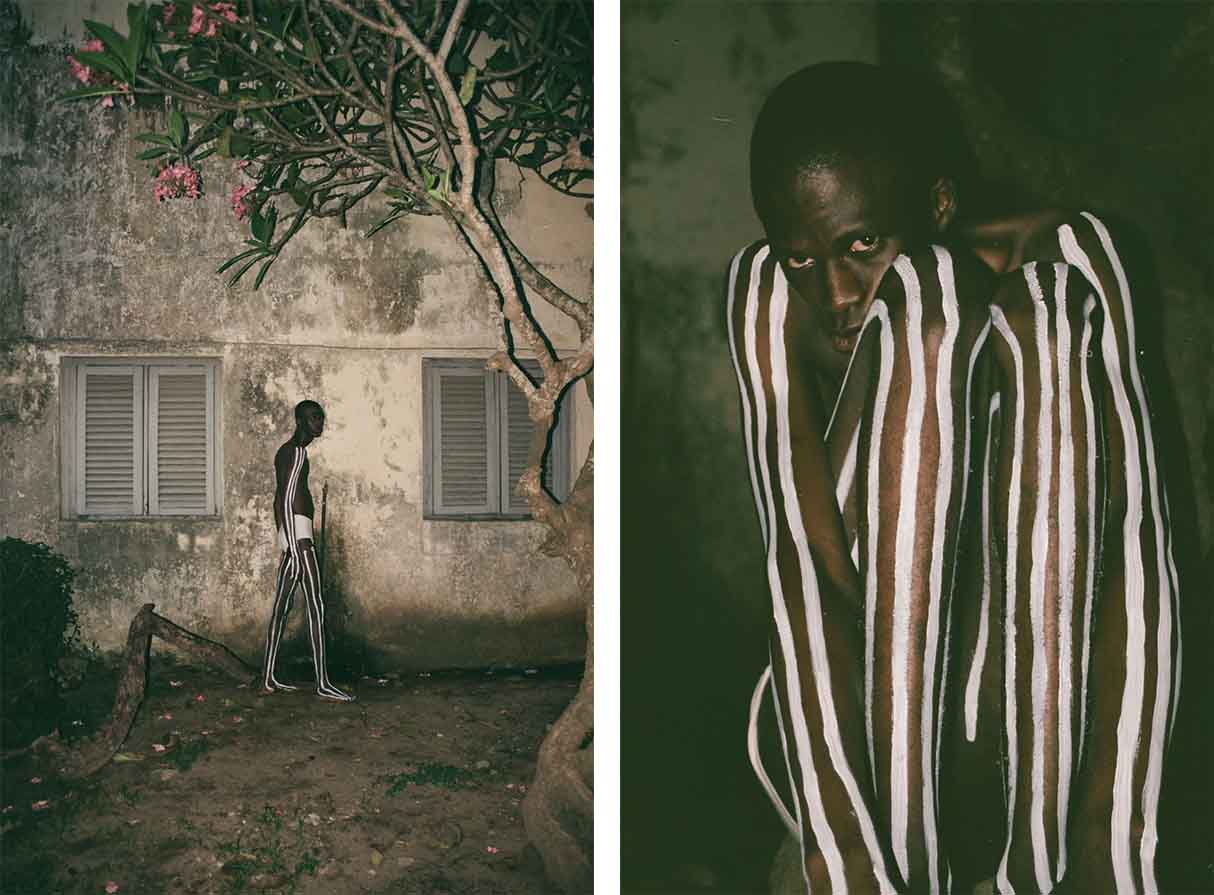

Miria, iyé i yèrè gniniga The visual story of questioning one's identity. Our world is not as we once knew. Some struggle to hold on to their cultures and their values in the midst of an evolving world, while others embrace the changes in merging cultures and values. As a result I sometimes face a dilemma; asking myself, Who am I? What place do I hold in society? How do I stand out as an individual in a chameleonic culture? What is my purpose? I am a young Ivorian born in the metropolitan city of Abidjan. A city with many cultural and spiritual diversities that yet still stand as one ethnicity; being Ivorian. Growing up, my cultural identity was influenced by various television programs; European, American, Asian, and the great emergence of the internet. As a result of great technologies, I now speak both English and French, even better than my native tongue. So I ask myself, have I lost my cultural identity? Or is this my new identity for the sake of the merging of cultures? In the mundane I work in finance, and my love for the arts lead me to photography, designing, and art directing. I am constantly pulled in between these two opposite worlds often feeling as though society forces me to choose between them; As if they cannot coexist as reflections of what makes me who I am; As if one can only exist with just one label. So now, I look at myself in the mirror, and really ask myself, what’s it worth when I’m faced with my unquestionable end? For as long as I can remember I’ve had recurring thoughts, questions, about death. Meditating not on its many mysteries, because I am convinced that there is life after death; some justifying it with the idea of reincarnation, others with the existence of heaven and hell. Whatever the belief, the commonality is that the life we live now, will determine the life we’ll have after death. This series titled “Miria, iyé i yèrè gniniga” which means in the West African Malinké dialect, “think, and ask yourself about yourself”, is the illustration of my questioning of my social and cultural identity, which brings me back in introspection on the meaning of my current life, while facing the reality that an unquestionable death is to come. So I ask myself, will the self-questioning lead to living an honorable life or Do we strive to live an honorable life without questioning? “Miria, iyé i yèrè gniniga” is the journey of embracing the realities of life and death.
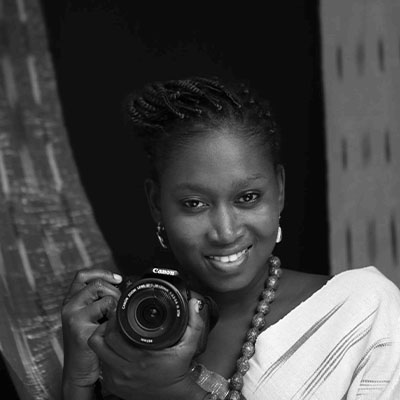


Lina Mensah
Togo



Lina Mensah
Togo
AFUMA: The intrepid Togolese Stilt Walkers
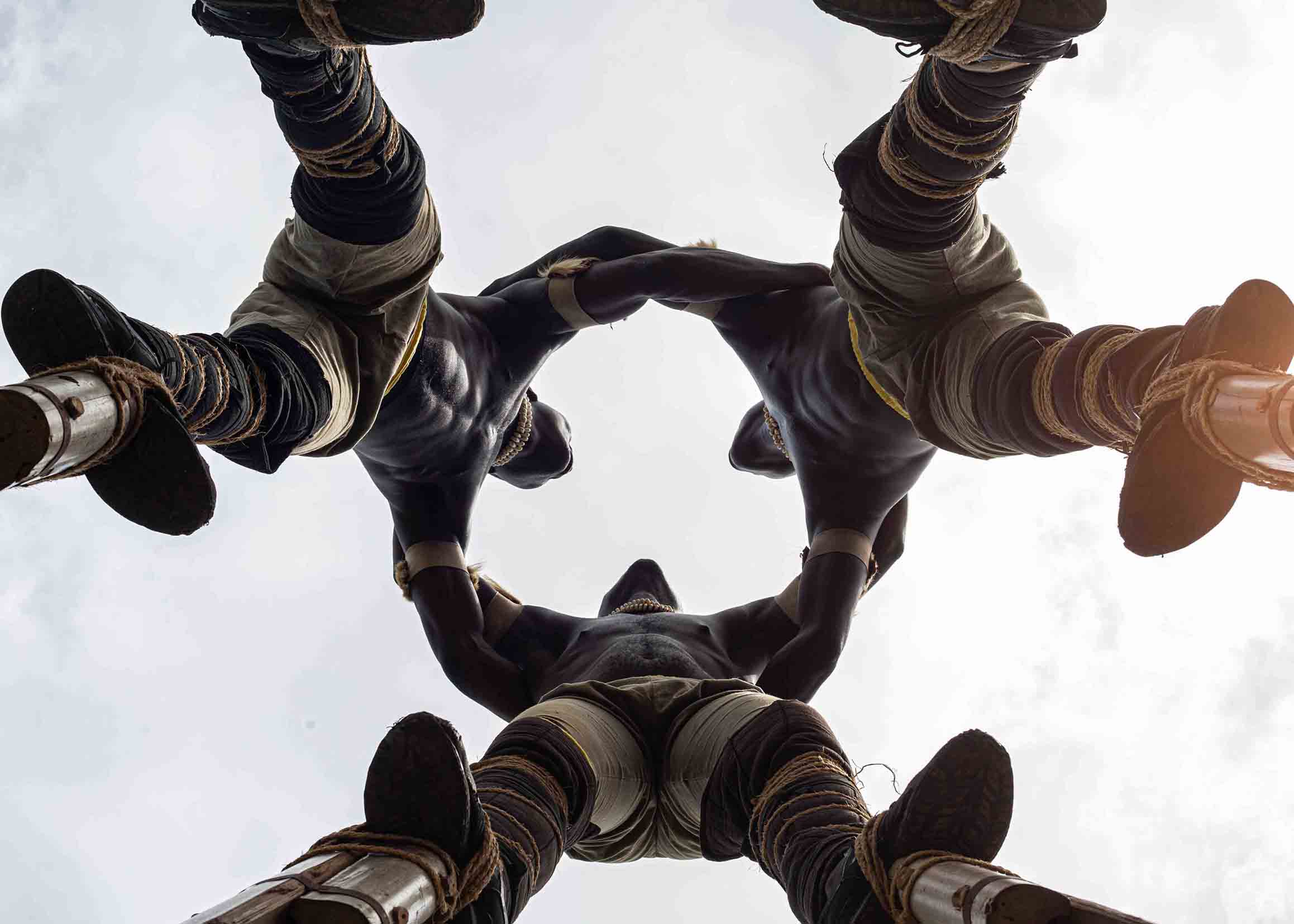

This photo series is the result of a collaboration between a photographic artist and acrobats. It paints the portrait of a group of young people who work hard to popularize and perpetuate an ancestral practice out of the ordinary, that of stilt walkers. Indeed, the tradition of stilt-walkers is kept alive in the plateau region, precisely in Atakpamé, the city of seven hills. In fact it is faithfully transmitted from generation to generation, which is demonstrated here through the group "Afuma, stilt walkers of Togo" native of this city, which for a while has been multiplying tours of shows around the world to enhance this tradition that it contributes to enrich and transmit. "Afuma" refers in Ifè, the language spoken in the region of Atakpamé, to the name of the aerial fern that grows on bamboo, the raw material used to make stilts. The ancestral art of stilts is nourished by spirituality, it thus takes its source in religion and traditional practices. However the stilt walker must strictly respect certain rules and prohibitions, respect the environment and pay attention to several other principles of life that have not been revealed to us. The use of symbols on the face is reminiscent of specific masks and movements would refer to practices inherited from forest creatures, including fairies. (Source: Cyriaque Kodjo Noussouglo, teacher-researcher in philosophy of art at the University of Lomé)
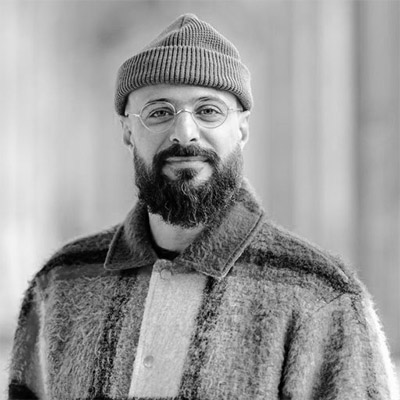


M'hammed Kilito
Morocco



M'hammed Kilito
Morocco
Among You
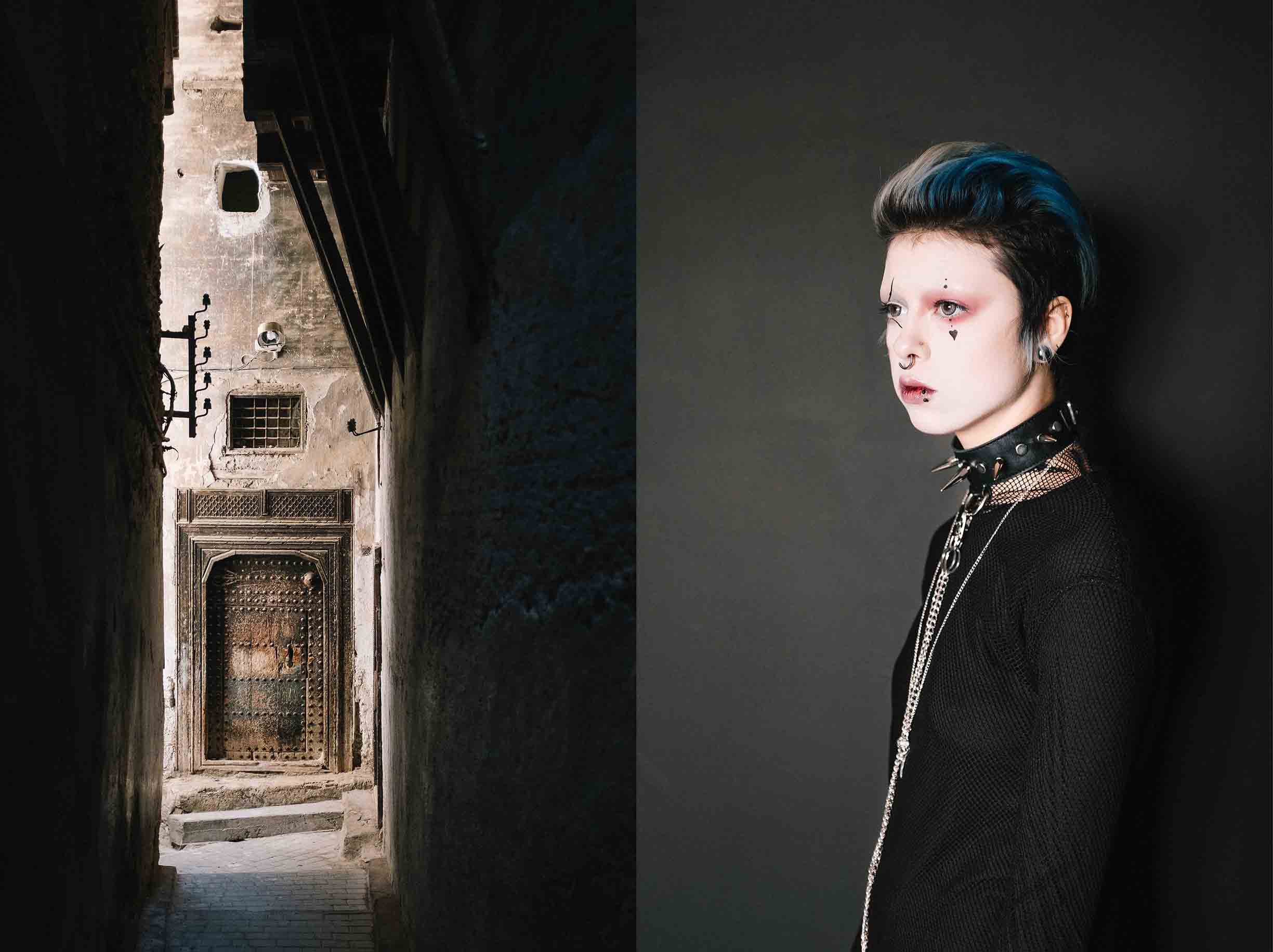

This project reflects the choices around personal identity for Moroccan youth. Through a selection of portraits, He documents young people who take their destinies into their own hands. These individuals have the courage to choose their own realities, often pushing the limits of society further. Whether through their creative activities, their appearance, or their sexuality, they convey the image of a young Morocco - alert, changing, claiming the right to be different and celebrating diversity. These young people, whose minds embody the resistance of a palm tree - a tree adapted to the harshest Moroccan climatic conditions - defy the conservative and traditional norms with regard to individual freedoms of Moroccan society on a daily basis. They cultivate their private oasis despite the obstacles they encounter in a country that they feel is not progressing at the same pace as they are, and they are inspiring others along the way.
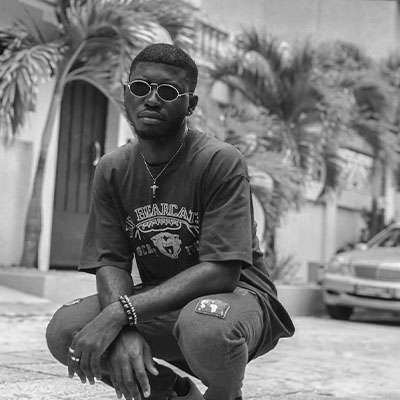


Zahui Marc Désiré
Côte d'Ivoire



Zahui Marc Désiré
Côte d'Ivoire
Lost Identity
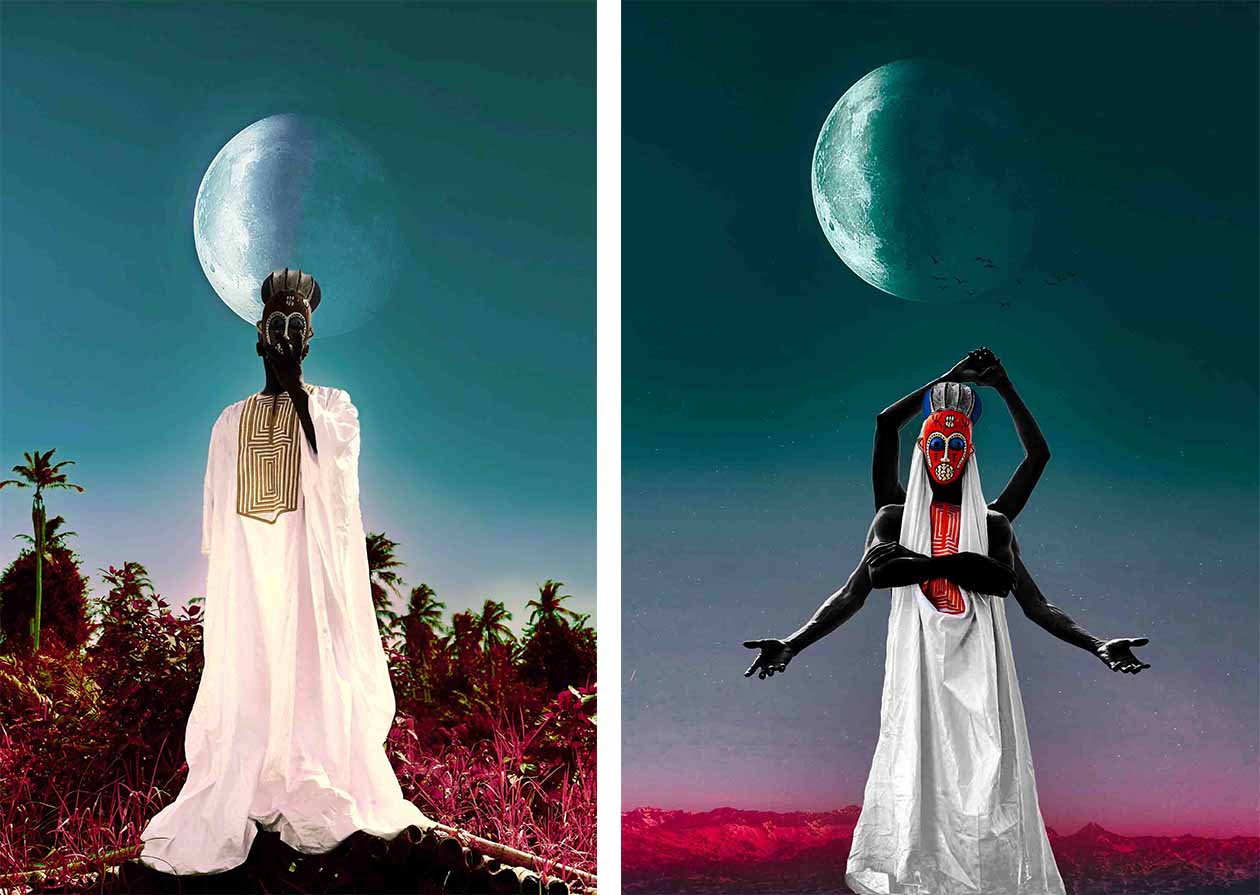

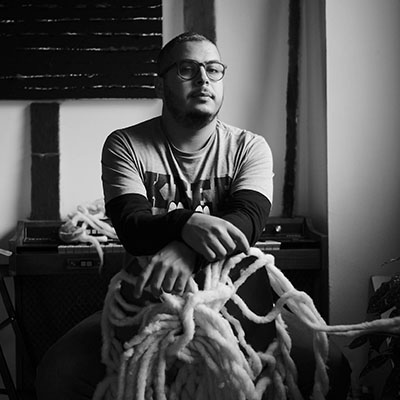


Mehdy Mariouch
Morocco



Mehdy Mariouch
Morocco
Studios
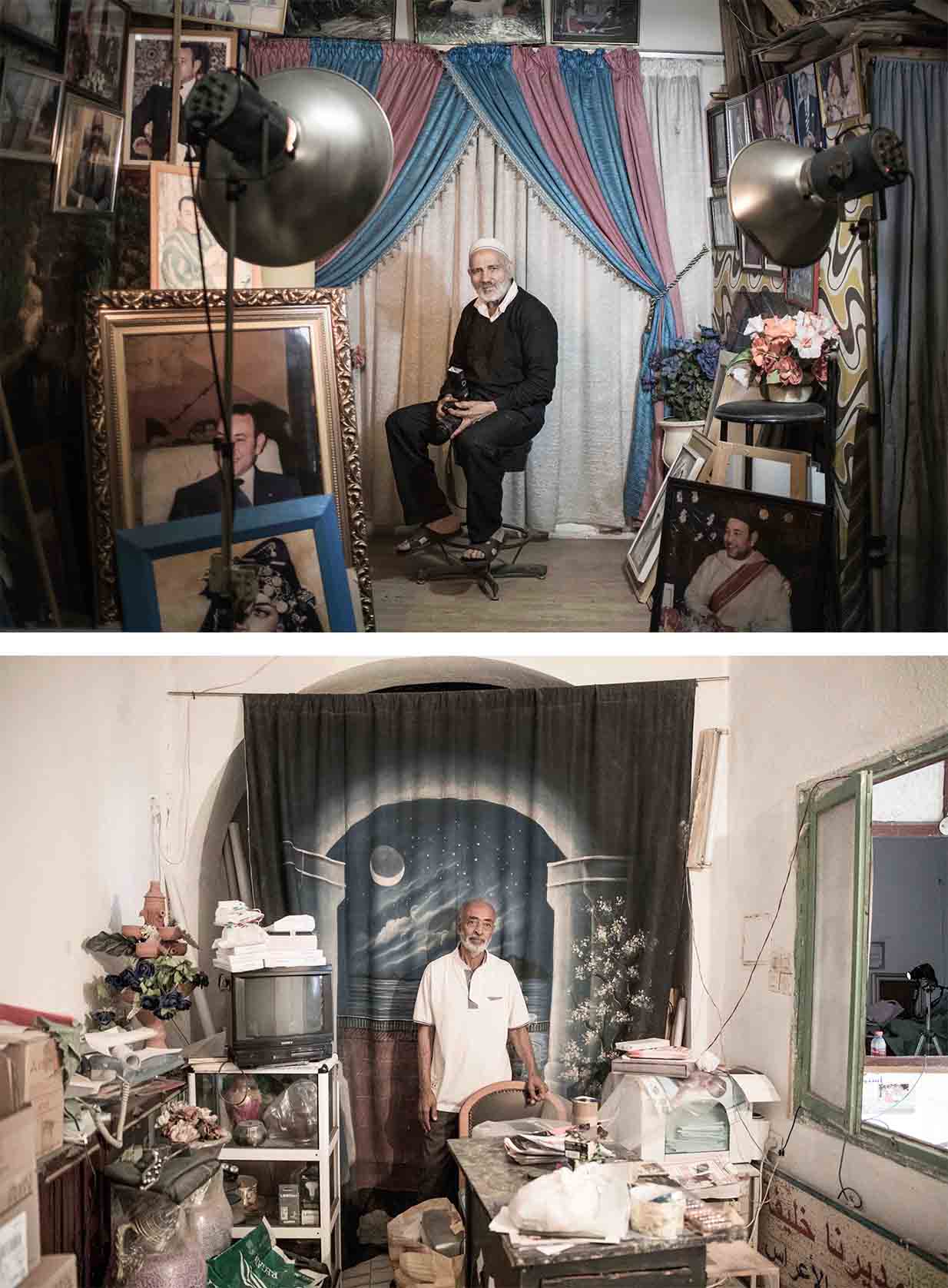

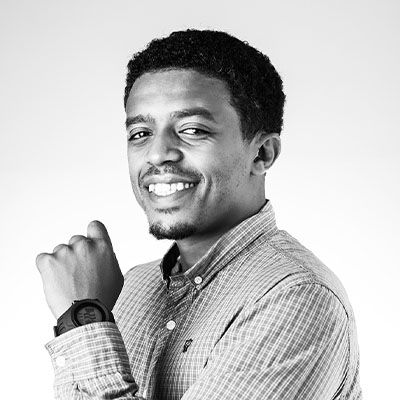


Mekbib Tadesse
Ethiopia



Mekbib Tadesse
Ethiopia
The Horsemen
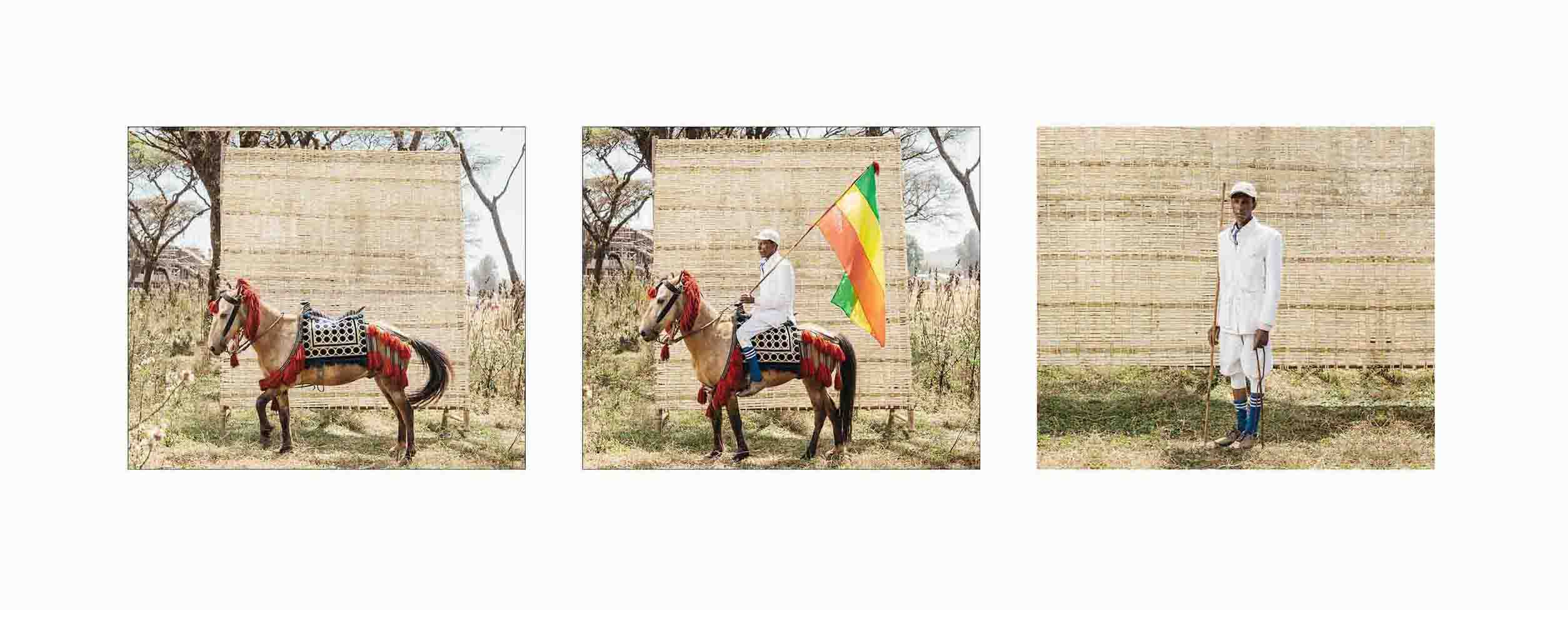

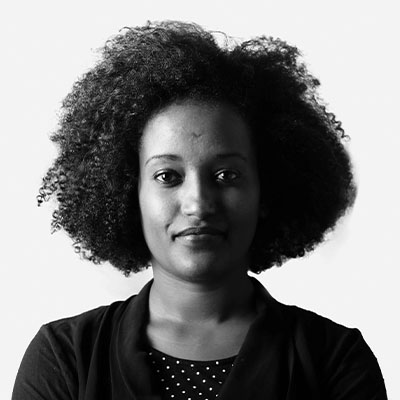


Meseret Argaw
Ethiopia



Meseret Argaw
Ethiopia
ERKE
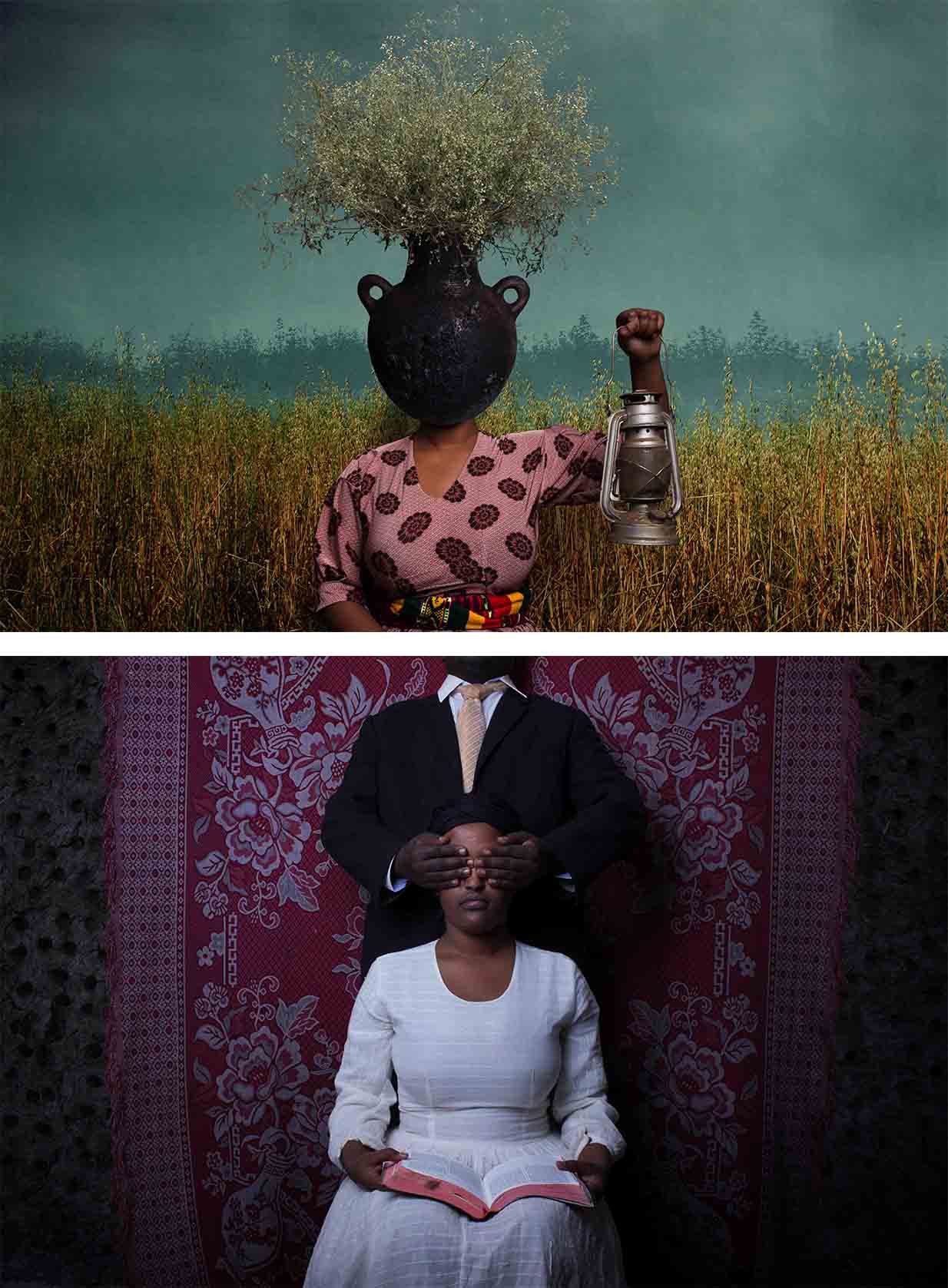

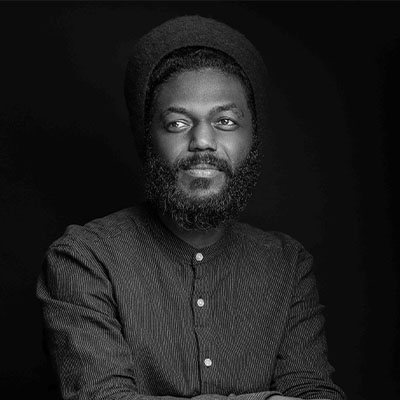


Mohamed Altoum
Sudan



Mohamed Altoum
Sudan
Hoshmmar
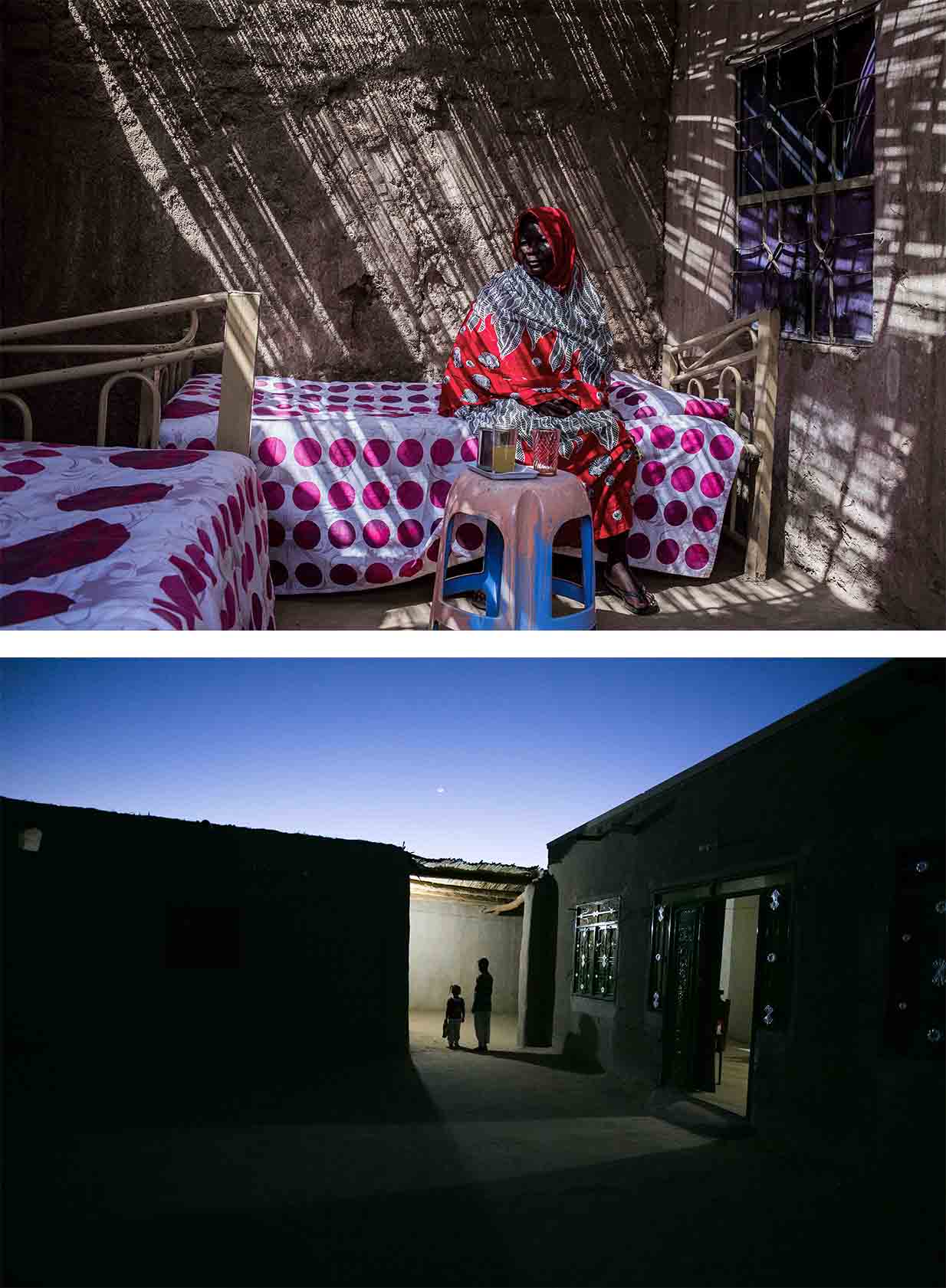

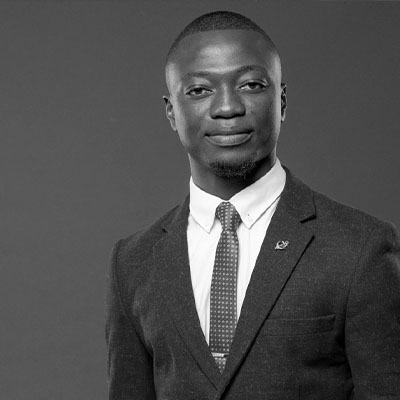


Mohamed Aly Diabaté
Côte d'Ivoire



Mohamed Aly Diabaté
Côte d'Ivoire
MOUSSOFARI Entails Brave Woman In Malinke
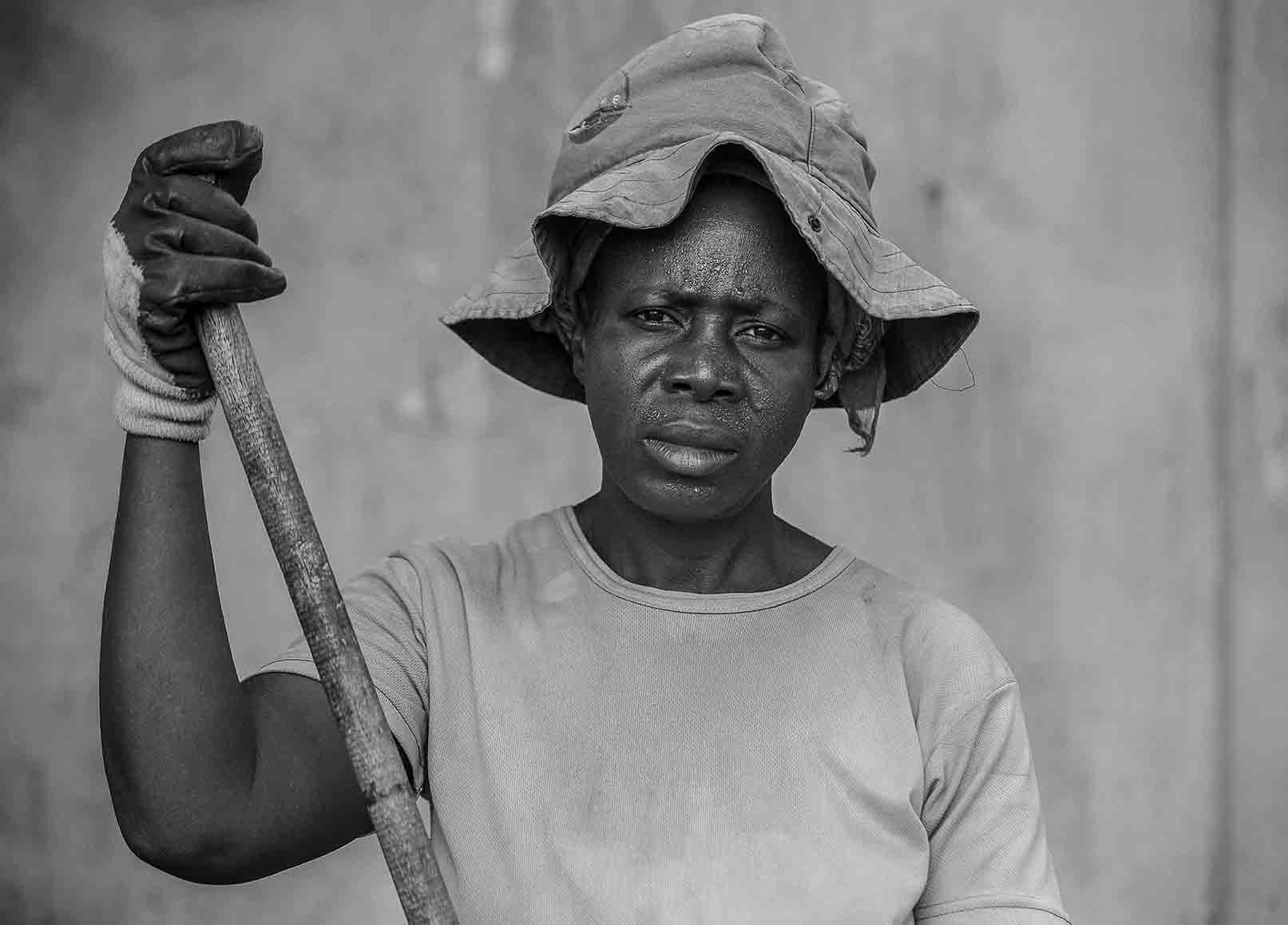

MoussoFari means brave women in Bambara language. This is a documentary photography which highlights garbage collectors women activities in Abidjan city. With the lens of my camera, I met these brave women to capture special moments of their daily routines. The looks I take, unveil the beauty of their gestures similar to choreography. Day and night, camouflaged in green uniforms, they walk on the streets of Abidjan with their brooms. My eyes have been nourished.
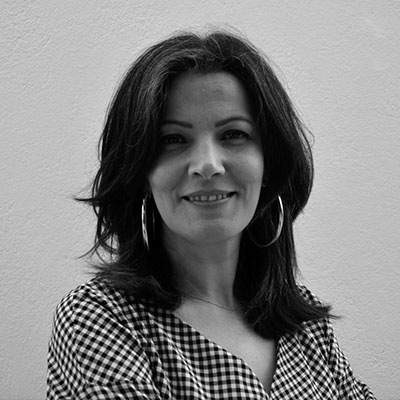


Mouna Jemal Siala
Tunisia



Mouna Jemal Siala
Tunisia
Bus Stations In The Era Of The 21st Century
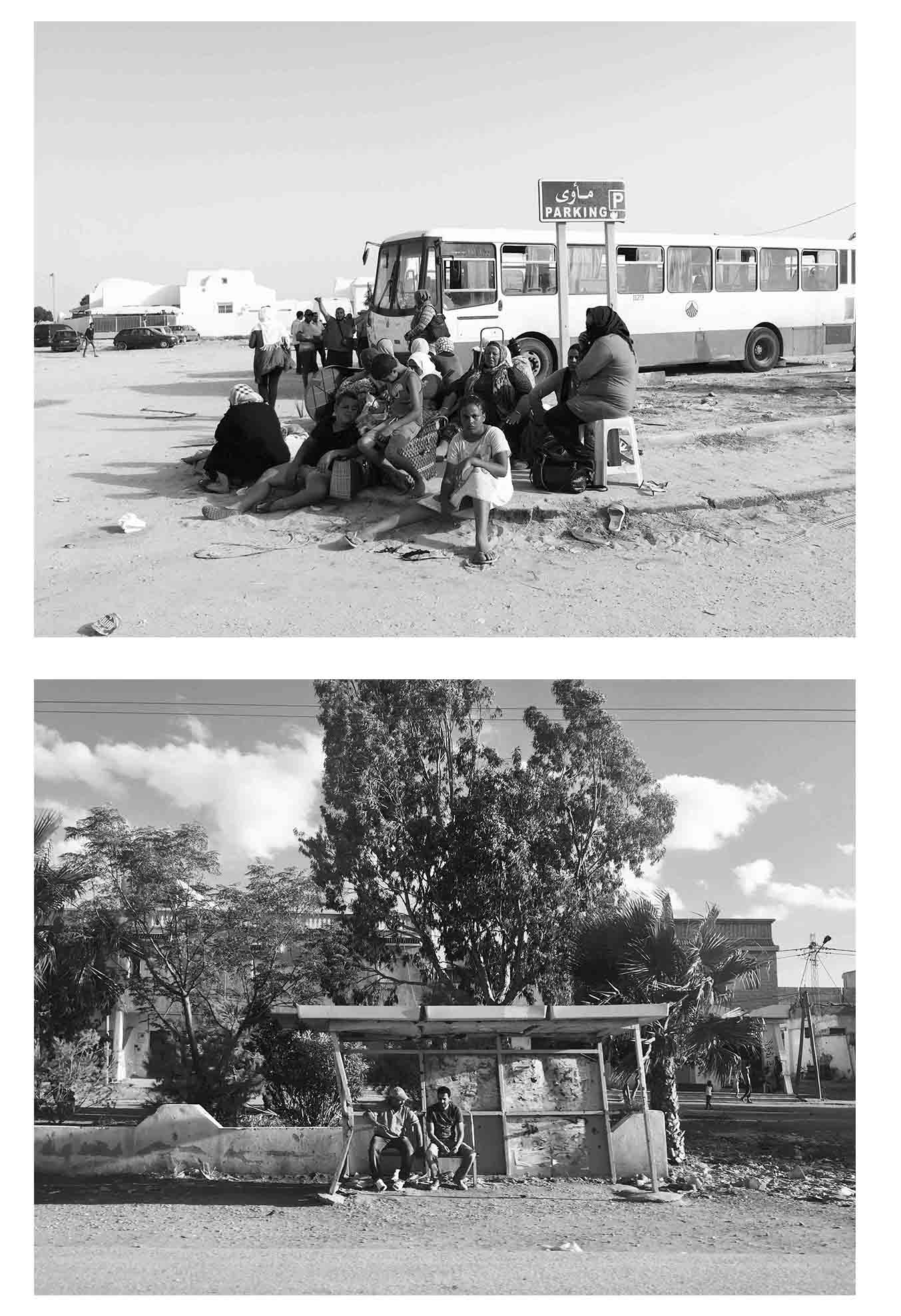

I chose to call this series of five photos taken among many others, on my daily route here in Tunisia these last years: "Bus stations in the era of the 21st century", because, quite simply, it is inconceivable and inadmissible that the bus stations are in this state in the era of today. This is a fact! My country, Tunisia, has been burning up for ten years. As a citizen artist, I am worried about the changes and disruptions that could destabilize my country. The state of disrepair of the economic, social and political system in post-January 2011 Tunisia is unfortunately perceptible in all sectors and regions. Public transport, whose infrastructure was relatively well thought out, has become a real ordeal and the bus stations that are falling into ruin at a glance due to lack of maintenance, have particularly caught my attention. It may be a detail, but it reflects an outdated, absent state. This is why, in response to the disorder that is settling in the human, urban, political landscape... I express myself through art, through the photographic image, to draw attention to problems, social, political... Art will not solve the problem immediately, but it is a witness of its time much more than the media news, and will be the cultural trace par excellence. That's why I wanted to freeze them in black and white, because for me they are, quite simply, timeless.
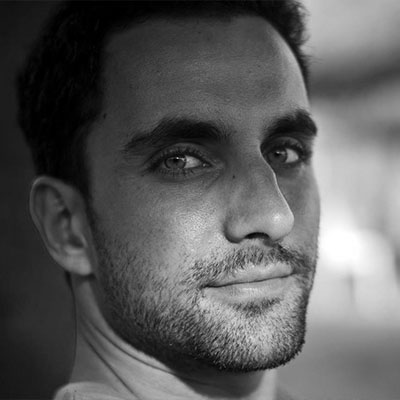


Moustafa Cheaiteli
Côte d'Ivoire



Moustafa Cheaiteli
Côte d'Ivoire
Babi Rail
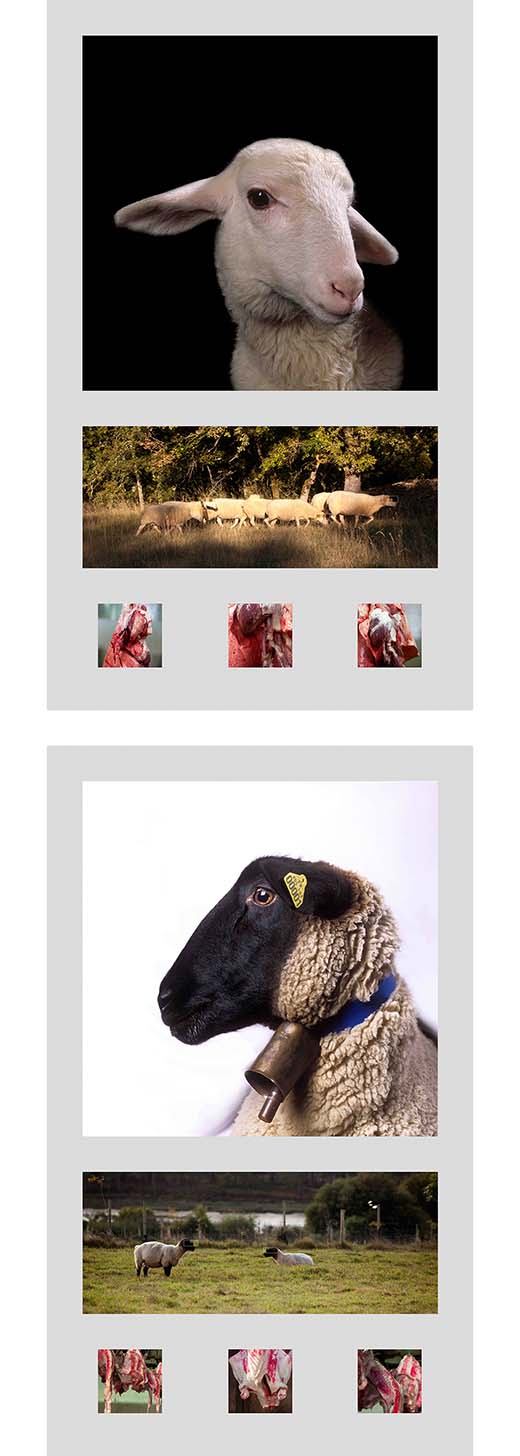

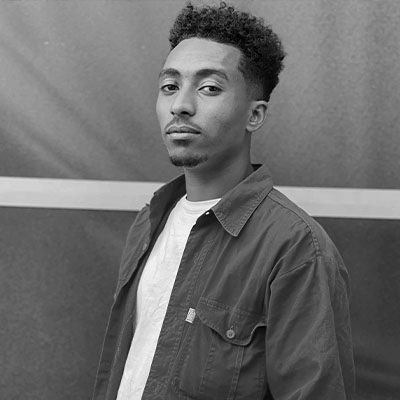


Muhammad Jamal
Ethiopia



Muhammad Jamal
Ethiopia
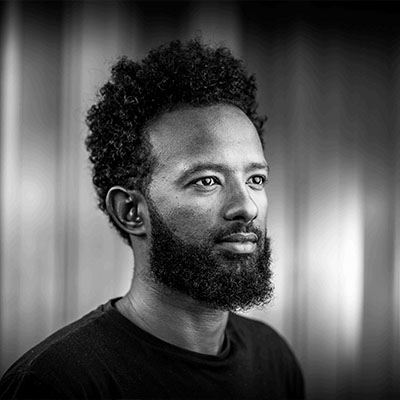


Mulugeta Ayene
Ethiopia



Mulugeta Ayene
Ethiopia
Flight ET302
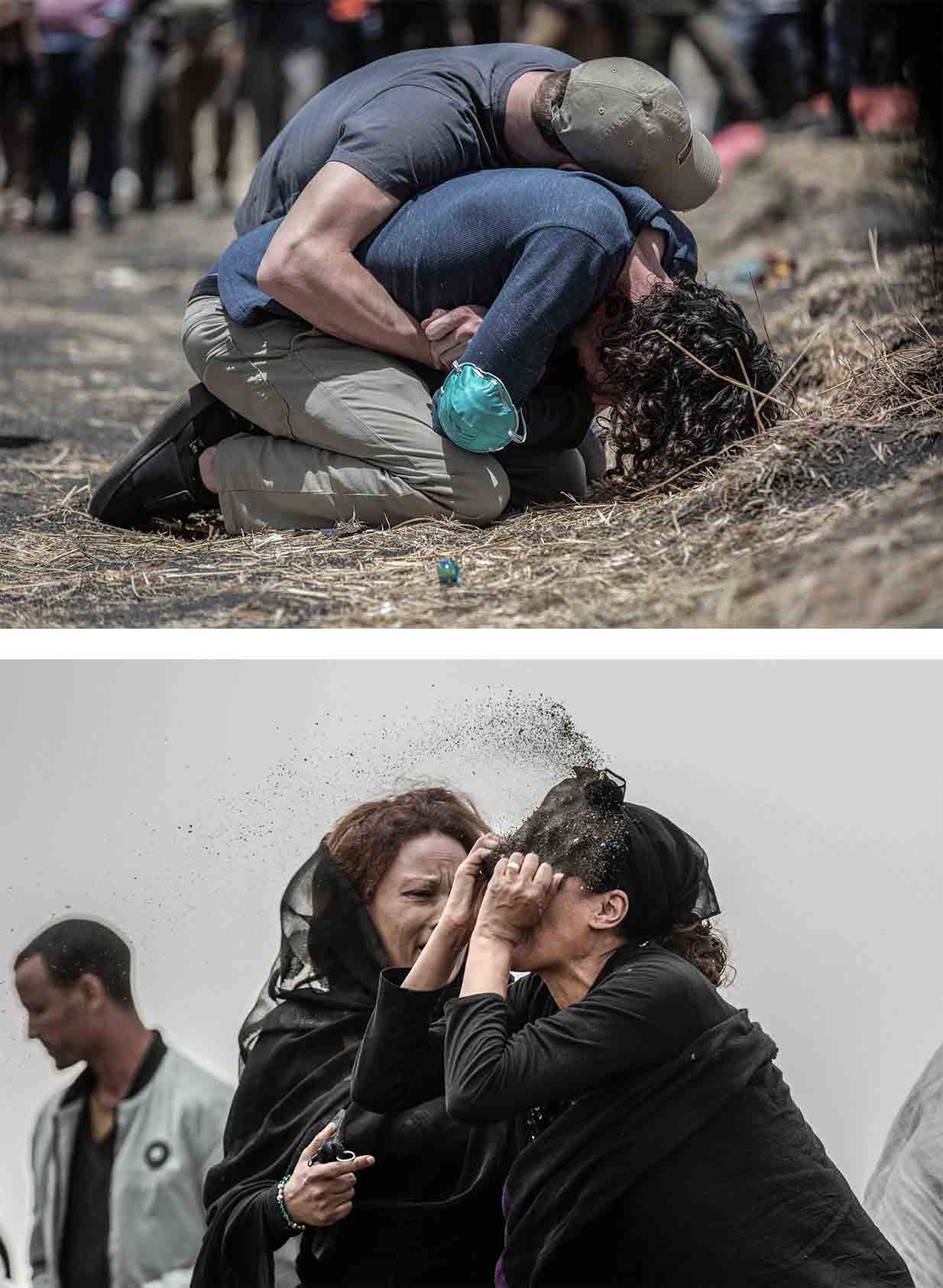

A relative of a victim of the Ethiopian Airlines Flight ET302 plane crash throws dirt in her face as she grieves at the crash site, near Addis Ababa, Ethiopia. On 10 March, Ethiopian Airlines Flight ET302, a Boeing 737 MAX, disappeared from the radar six minutes after take-off from Addis Ababa airport and crashed into a field, killing all 157 people on board. The impact was so great that both engines were buried in a crater 10 meters deep. A week after the crash, empty coffins were buried at a ceremony at the Holy Trinity Cathedral in Addis Ababa, as victims were unable to be identified. Officials gave relatives bags of earth from the crash site. On 14 November, eight months after the crash, the site of the impact was covered and the unidentified remains of victims buried in rows of identical coffins. Comparisons were made with the crash of a Lion Air aircraft, also a 737 MAX, 12 minutes after take-off from Jakarta in October 2018. Countries across the world, initially with the exception of the US, grounded the 737 MAX. First reports showed that pilots had been unable to prevent the plane repeatedly nosediving, despite following procedures recommended by Boeing. It appeared that in both cases pilots were struggling to deal with an automated safety system designed to prevent stalling, which was repeatedly pushing the nose of the plane down. It seemed that the system was being activated, possibly due to a faulty sensor, even though nothing was wrong. It later emerged that American Airlines pilots had confronted Boeing about potential safety issues with the MAX. Boeing had resisted their calls but promised a software fix, which had not been done by the time Flight ET302 crashed. Planes remained grounded into 2020.
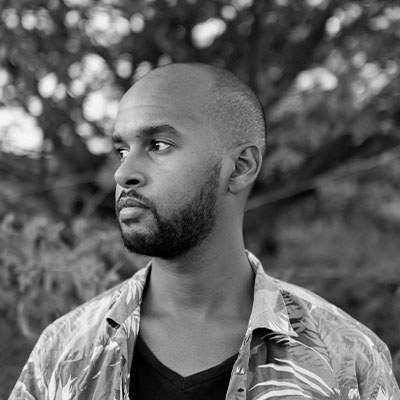


Mustafa Saeed
Somalia



Mustafa Saeed
Somalia
Cohesive Randomness
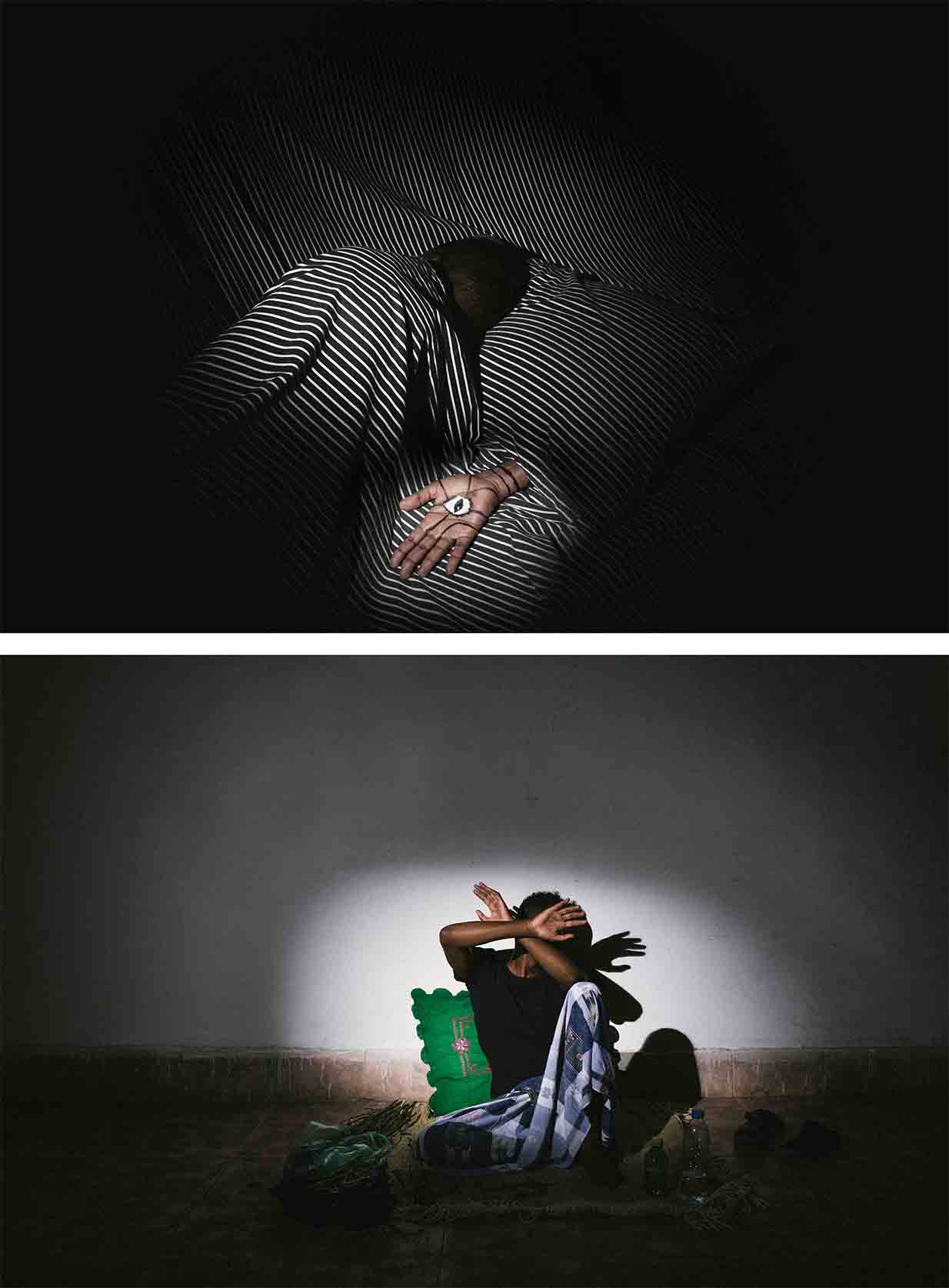

Can anything get us away from reality, make us create our own bubble? when things get so hard to change, and you see yourself indulged in choices, ways to change the root you’re taking but it gets harder, and based on your level of breaking hardships you might see yourself taking shortcuts, that might be against your progression. Does a piece of fabric represent our belongings? When a soul can’t see itself being independent, but having the need to be part of or dependent on a bigger chain of relationships to exist, without it might feel to cease. Just create to impress? Follow till we fall? Obey till we lose ourselves? Do we have a choice if the universe is predetermined? If I’m free, why am I explaining my doings? Can’t I be the tool of feelings and expressions, putting it to tangibility.
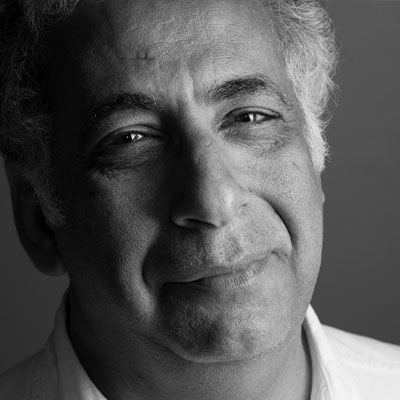


Nabil Boutros
Egypt



Nabil Boutros
Egypt
Ovine Condition


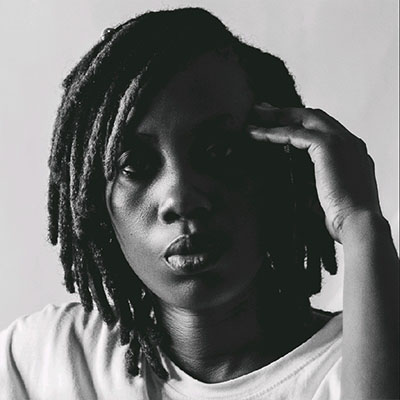


Nadi Jessica
Côte d'Ivoire



Nadi Jessica
Côte d'Ivoire
L'EMPRISE
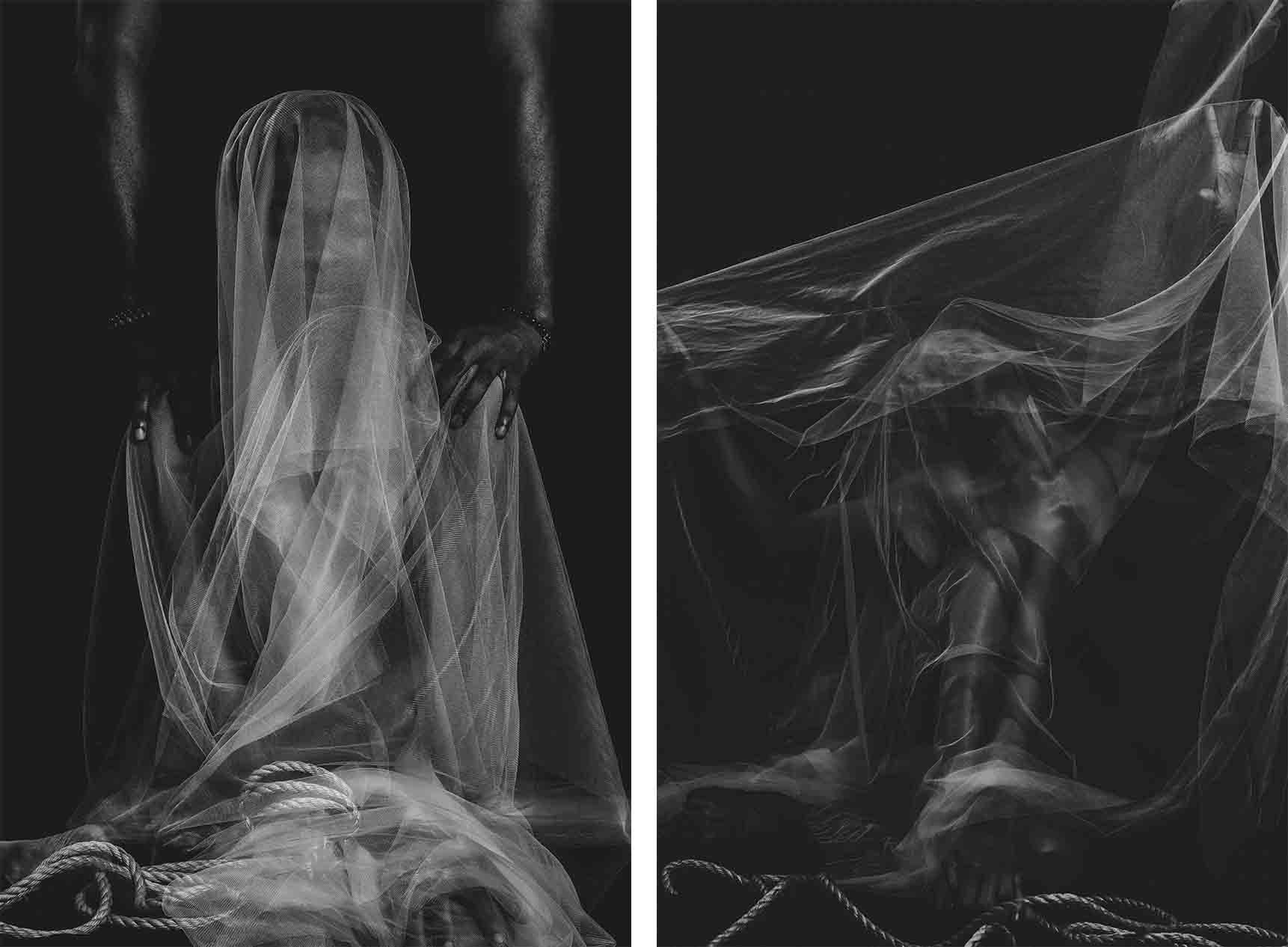

L'EMPRISE, is the name of the artistic series that the photographer started in 2020. For a long time, she couldn’t understand why women undergoing gender-based violence, often return to their abusers or feel unable to leave them. By the way, one question come to her mind: Why don't they leave them? She was able to understand later, when she took lessons in Psychology as she says: "Women don't leave them, because they have been trapped into a controlling relationship. Control is a psychological pattern by means of which a person dominates over another. The goal is to oblige the other person to meet their expectations regardless of her well-being. Thus, it is a state under which the husband puts his wife with an ascendancy over her, a state of domination and manipulation. The woman under control is both in a position of submission and in a higher emotional dependence." With her art, she tries to interpret the trap women undergoing physical, verbal and psychological violence fall into. Hence, the artist highlights gender-based violence.
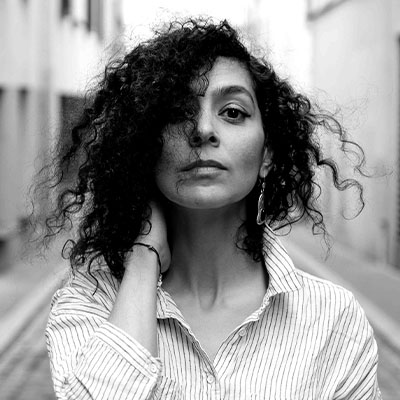


Nadja Makhlouf
Algeria



Nadja Makhlouf
Algeria
El Moudjahidate : Invisible to Visible, Fighters Women
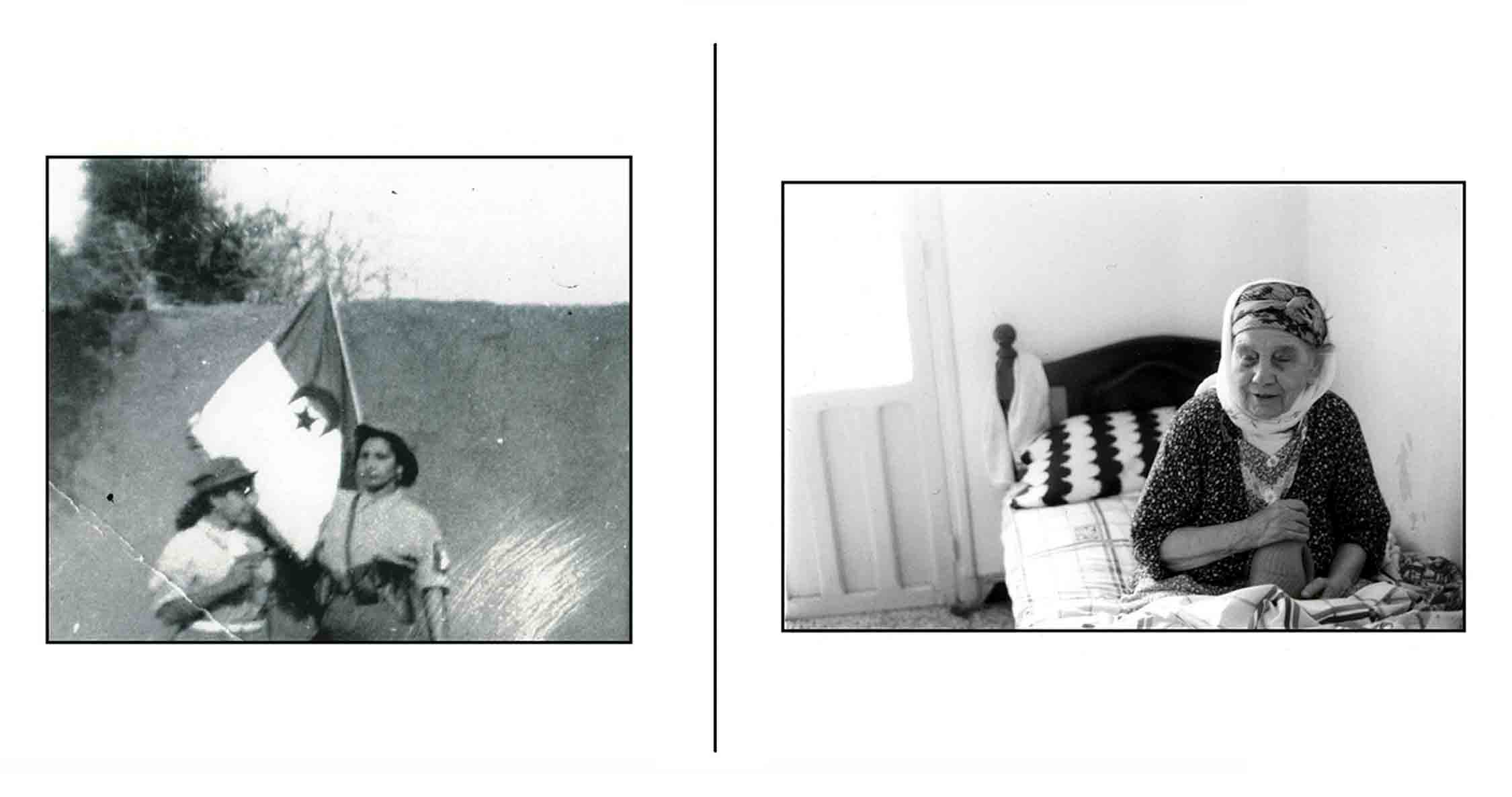

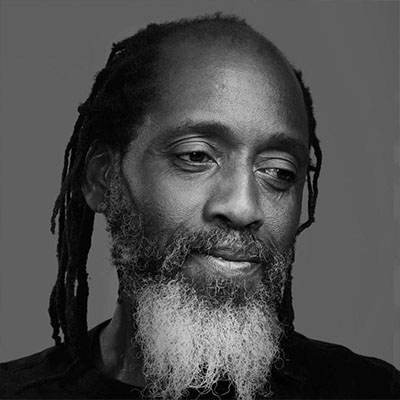


Nii Obodai
Ghana



Nii Obodai
Ghana
Paradox of Paradise
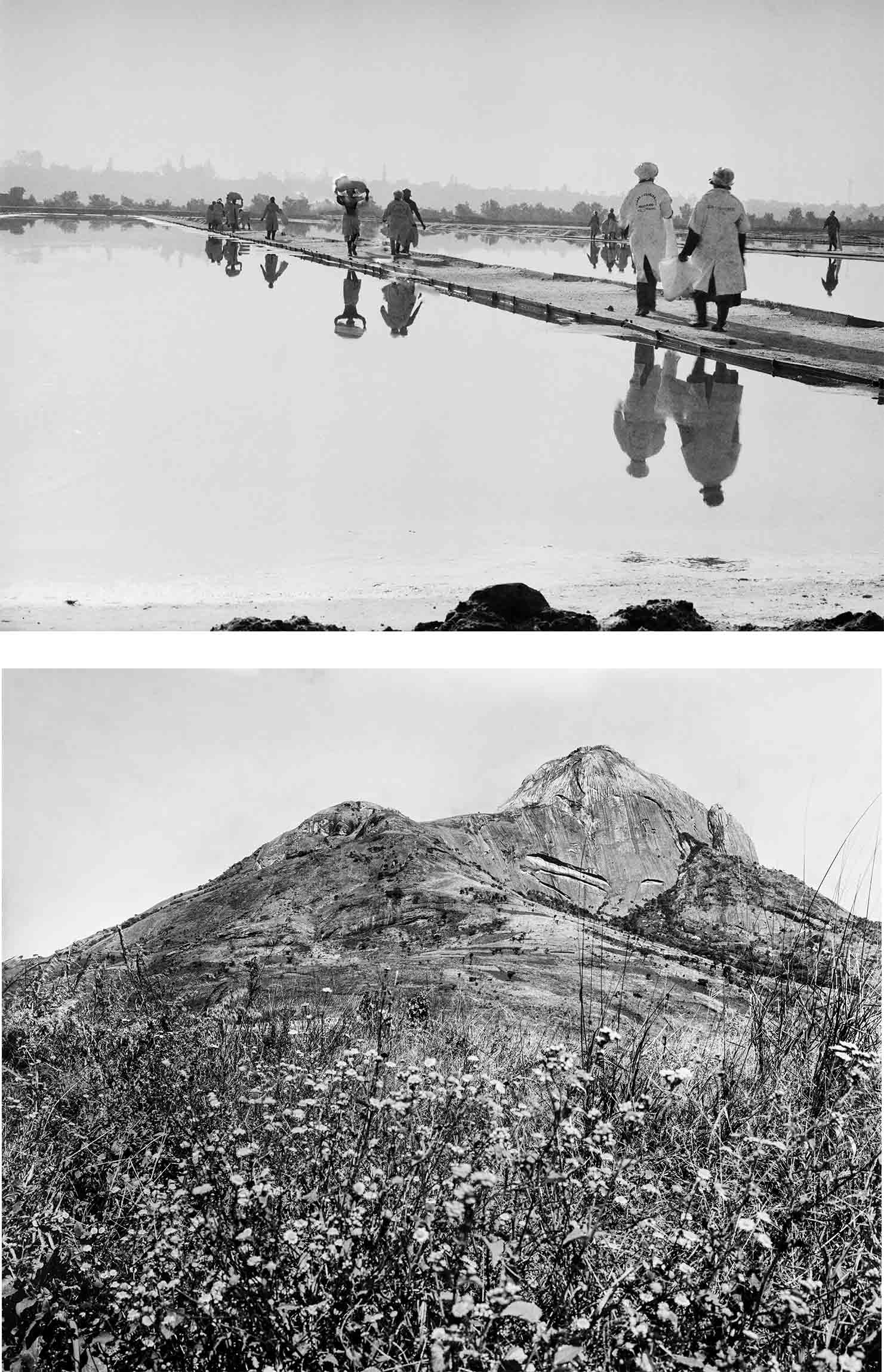

Paradox of Paradise’ explores my relationship with the environment as a living and mythological space bound by oral and historical stories. In Mozambique - where I currently live - the post-colonial landscape tells its own tales of how the struggle for independence from the Portuguese coloniser transitions into Mozambique. This country, one of the last African countries to rip itself from the brutalities of imperial exploitation, is rich with poetic landscape narratives of self-determination, leaving the constraints of language and the banal literality of vision. I walk through the landscape as a realm of the occult. My travels are an escape into other realities of the world, guided by the forces of the invisible. Is there another truth to be told? Can we let go of what we think is real and maybe experience something new? Who are we in relationship to Nature and the spaces we inhabit?
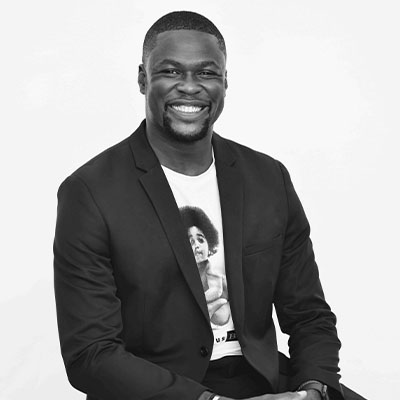


Olivier Khouadiani
Côte d'Ivoire



Olivier Khouadiani
Côte d'Ivoire
Trance
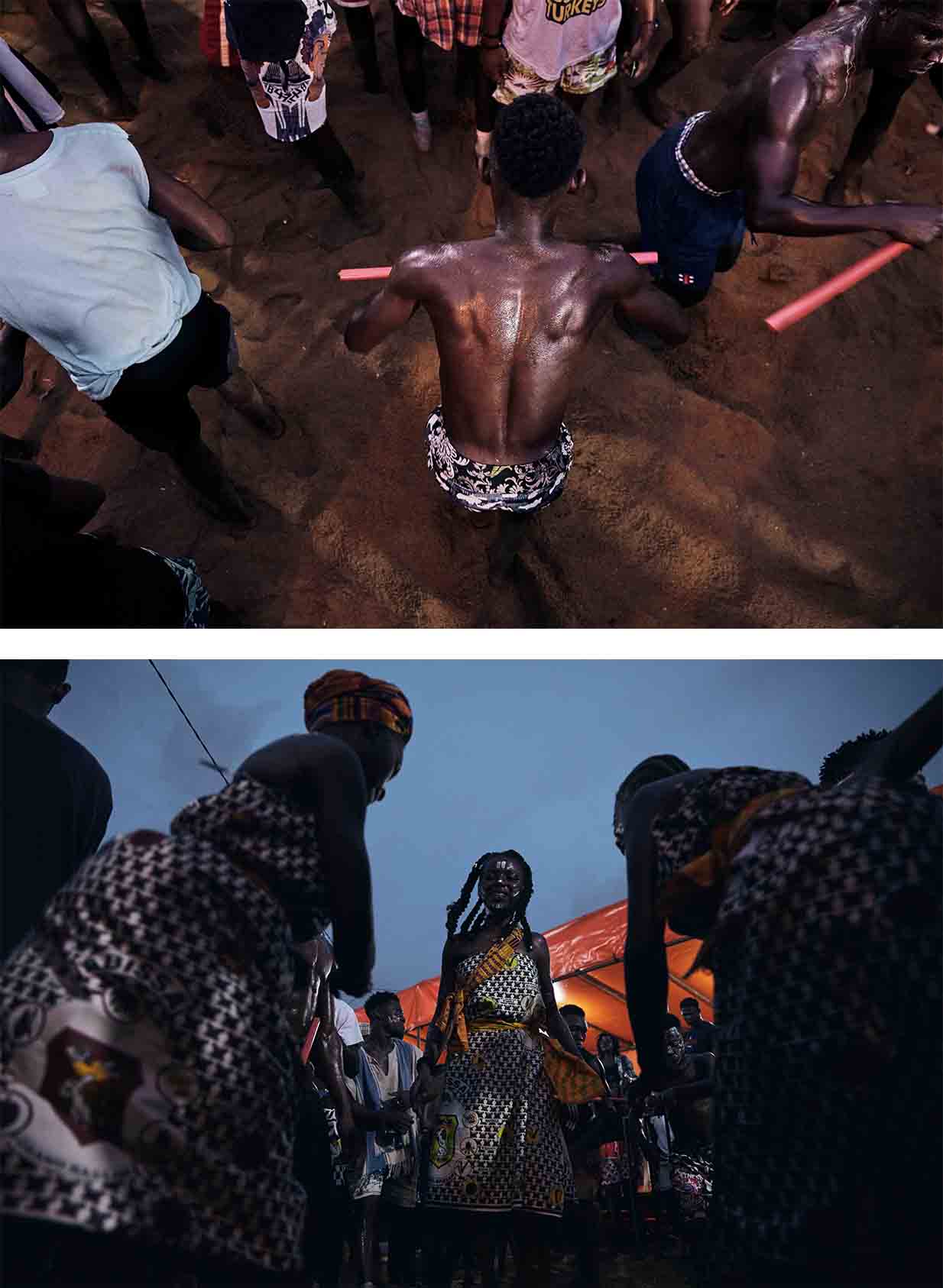

The abissa is a ceremony that commemorates the new year for the Nzima community, is a celebration of sharing and transmission between the old and new generations, especially a dance on a wild rhythm when the tam-tam resonates. Trance is a small immersion into the component of dance in my braoder series around the Abissa.
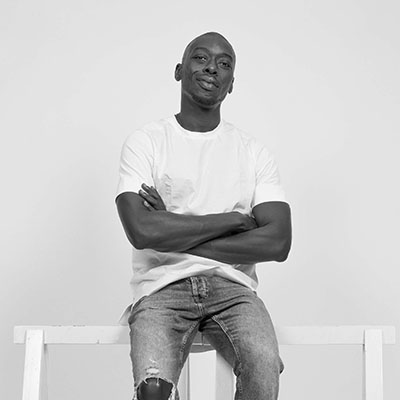


Omar Victor Diop
Senegal



Omar Victor Diop
Senegal
Allegoria - 2021
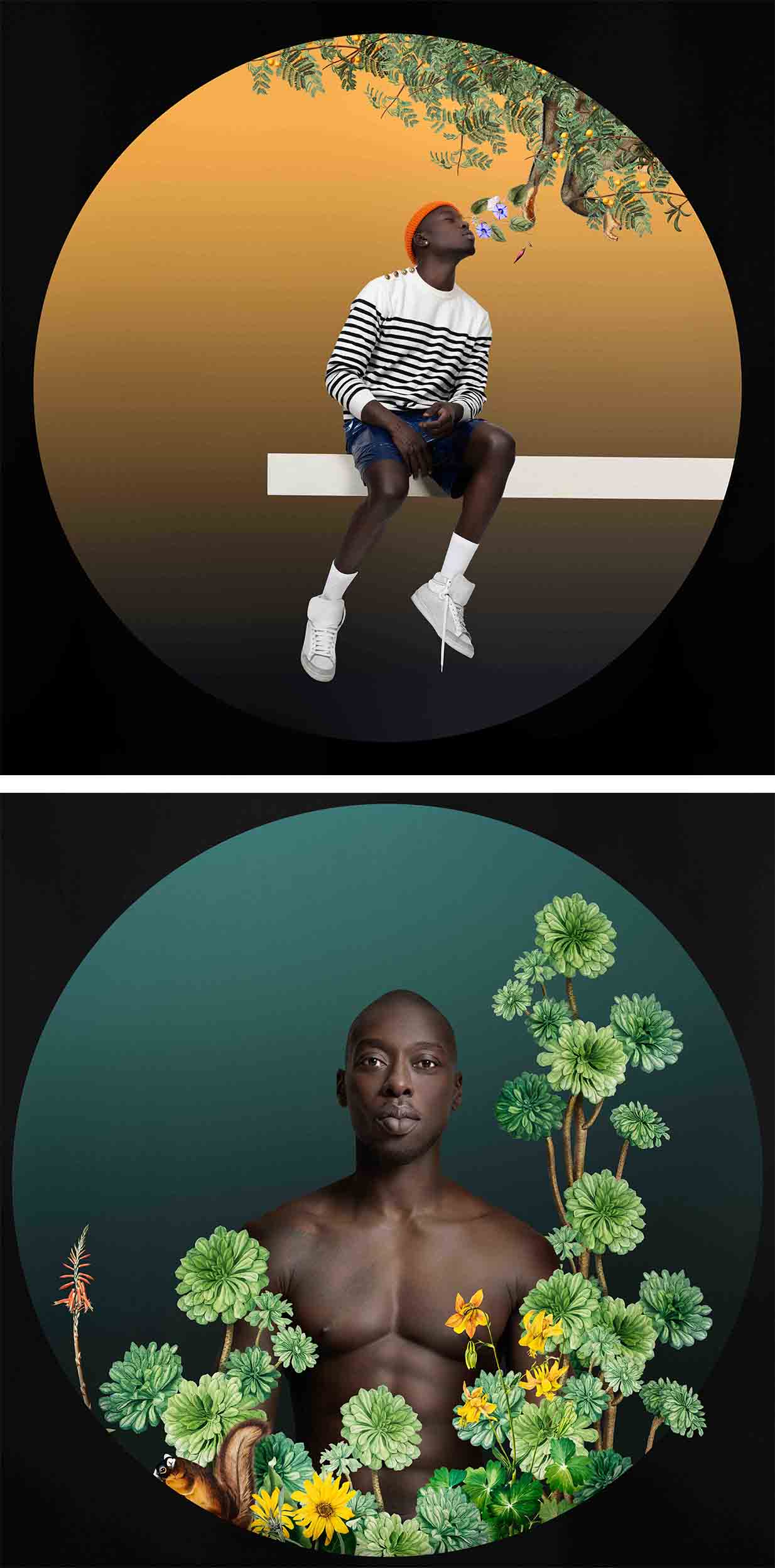

After the success of his first two series, Diaspora and Liberty, Omar Victor Diop unveils Allegoria. The Senegalese photographer begins a new chapter that addresses the issue of the environment and the importance of the challenges the African Continent is facing. In 15 allegorical photographs, the artist embodies humanity that must protect life, humanity surrounded by endangered floral and animal species; humanity again, concerned to see biodiversity become a memory that can only be consulted in natural history textbooks. Diop states: “It’s been exactly ten years since I grabbed a camera with the intention of showing my people’s struggle, their moments of pride, their selflessness, their incredible diversity and adaptability. In this new conversation I hope to see us participate and take the lead in the global environmental movement”
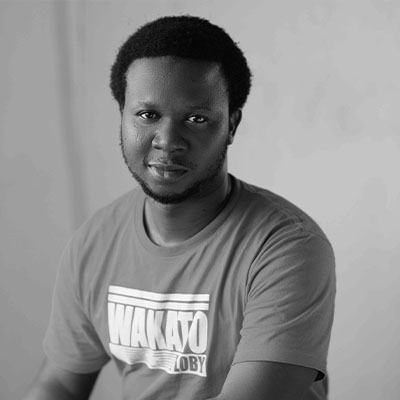


Omoregie Osakpolor
Nigeria



Omoregie Osakpolor
Nigeria
Litany (On Going)
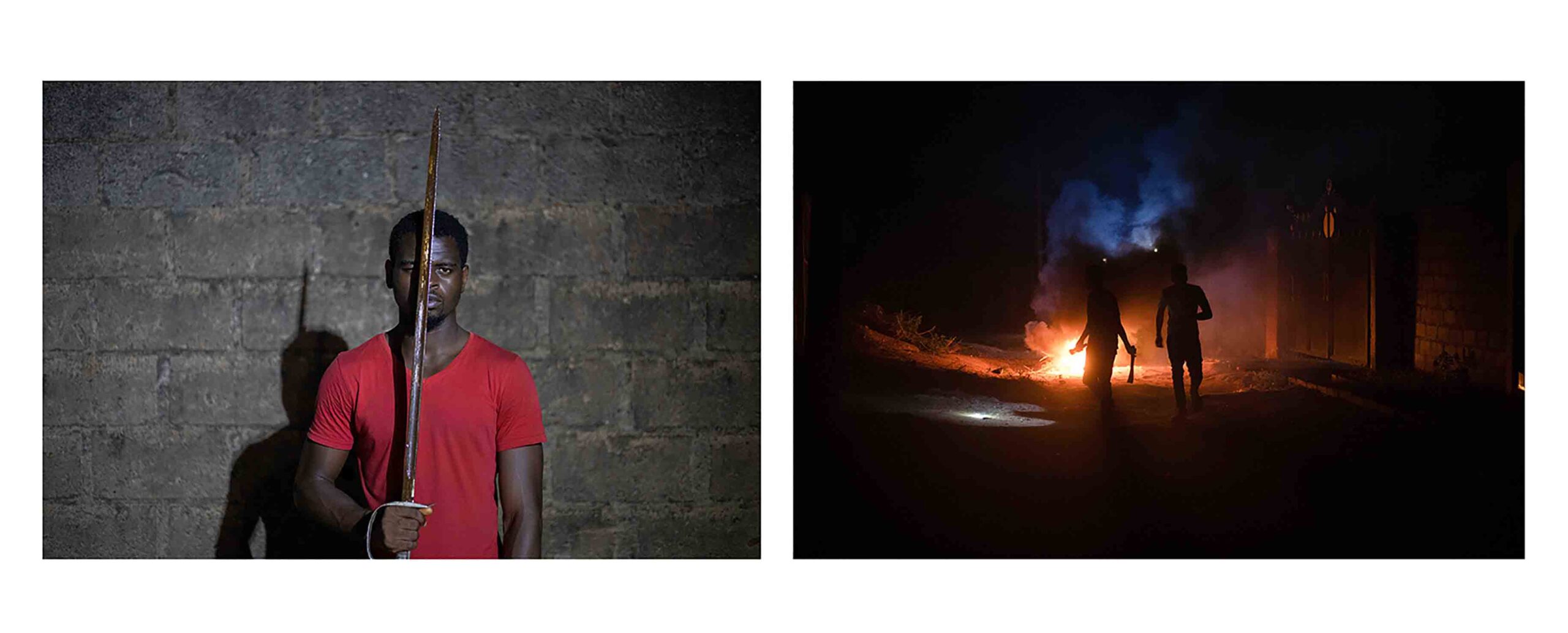

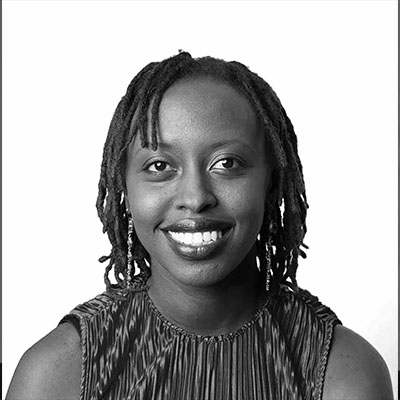


P.Wamaitha Ng'ang'a
Kenya



P.Wamaitha Ng'ang'a
Kenya
SEASONS
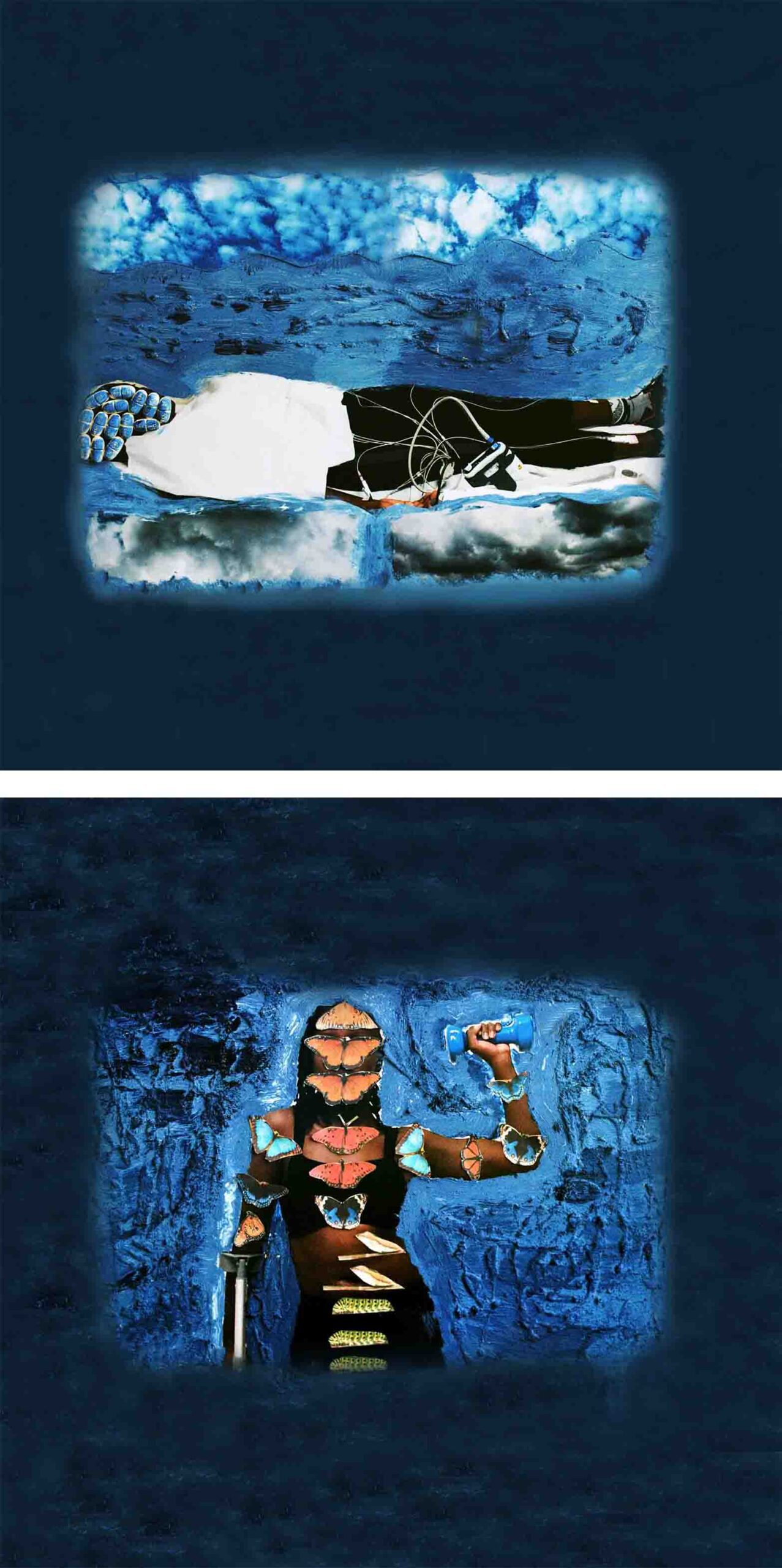

“I am my own muse, the subject I know best, the subject I want to better.” Oroma Elewa Drawing inspiration from Elewa’s words, Seasons is a mixed-media project, with which she seeks to depict her personal journey with Scoliosis and Poland Syndrome. Both conditions became evident in her adolescent years, however, the latter only being diagnosed correctly in 2018. Adolescent idiopathic scoliosis is an abnormal curvature of the spine that appears in late childhood or adolescence. Instead of growing straight, the spine develops a side-to-side curvature, usually in an elongated ‘S’ or ‘C’ shape. Scoliosis can occur as a feature of other conditions, including a variety of genetic syndromes. Poland syndrome is a disorder wherein affected individuals are born with missing or underdeveloped muscles on one side of the body, resulting in abnormalities that can affect the chest, shoulder, arm, and hand. “I am on a daily journey of discovery with the resolve to keep pushing through the physical pain and psychological effects. Just as the seasons come and go, the morning Sun prevails in his persistence to overthrow the darkness once again. I emulate this certain daily ritual with my own, personal struggle powered by my will embracing my journey - fighting, enduring, rising again. Following my instincts, but forever cognisant of the stormy seas and the ensuing calm that surely lags nearby, I find solace in knowing I will become a Butterfly again… The Never ending Metamorphosis happens once again.”
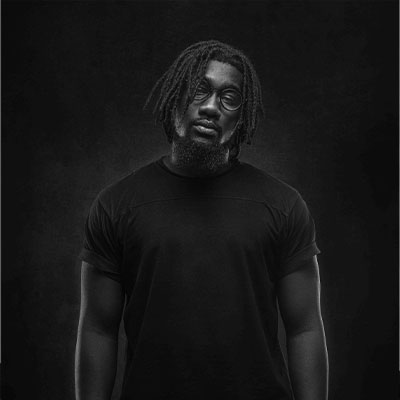


Pango N'fa Pierre
Côte d'Ivoire



Pango N'fa Pierre
Côte d'Ivoire
Wetu
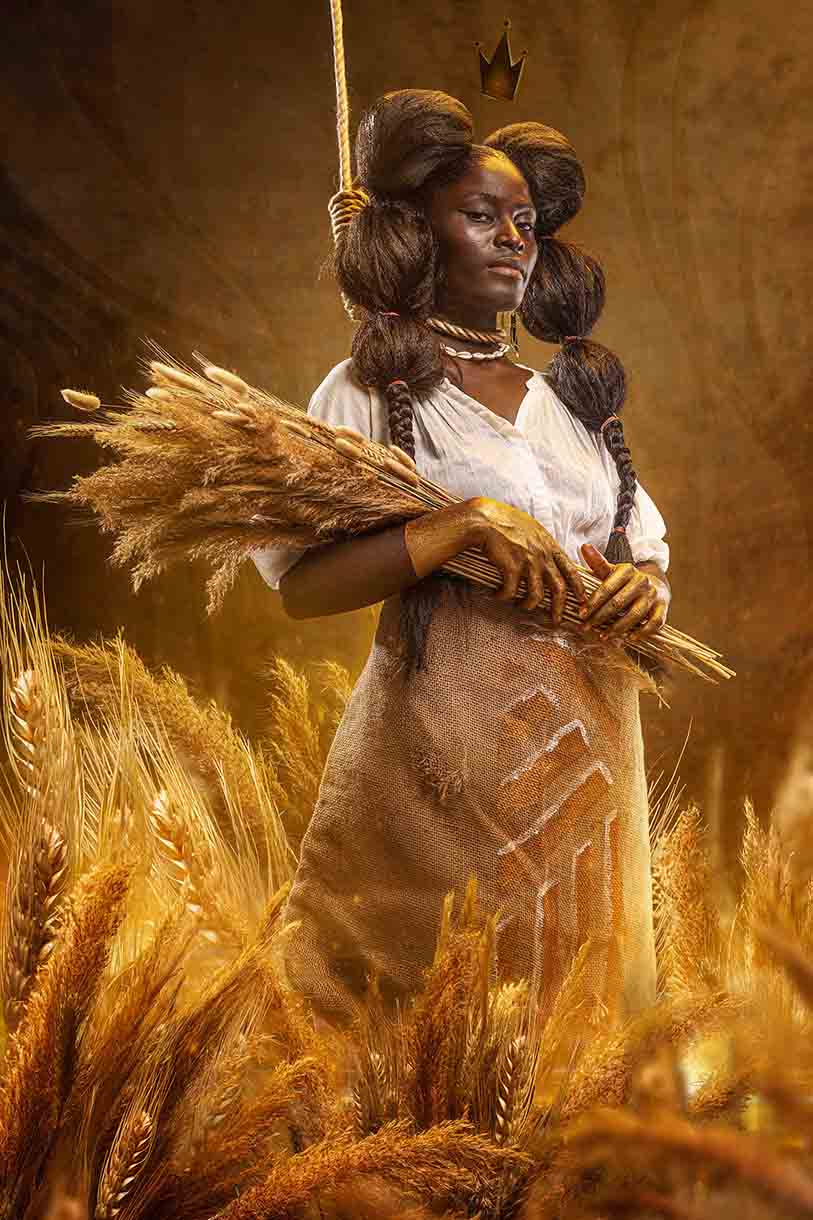

Does martyrdom reveal the nobility of bloodshed? Between generational patterns and hopes for the future, Wetu, Our People, in Swahili, proposes to question the origins of identity. A bestial fatherhood, a woman bearing abundance and the heir to a throne made of the strings of his lineage. The notion of "Identity" then becomes nomadic, changing and even paradoxical: it is in perpetual motion, evolving with time and the experiences of each individual or group. to each one or to a group.
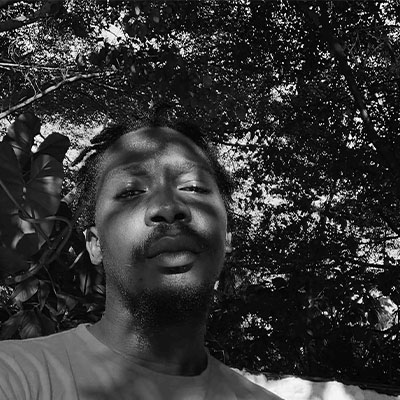


Bah Ekam Richard
Côte d'Ivoire



Bah Ekam Richard
Côte d'Ivoire
Death and Hope
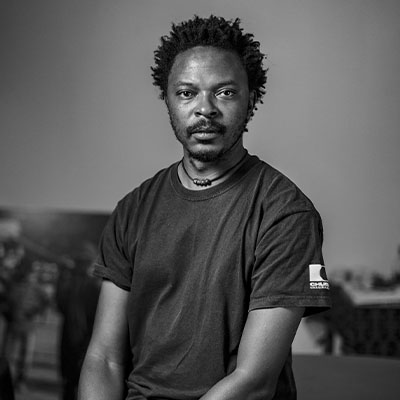


Sammy Baloji
Democratic Republic of the Congo



Sammy Baloji
Democratic Republic of the Congo
Essay on Urban Planning, 2013
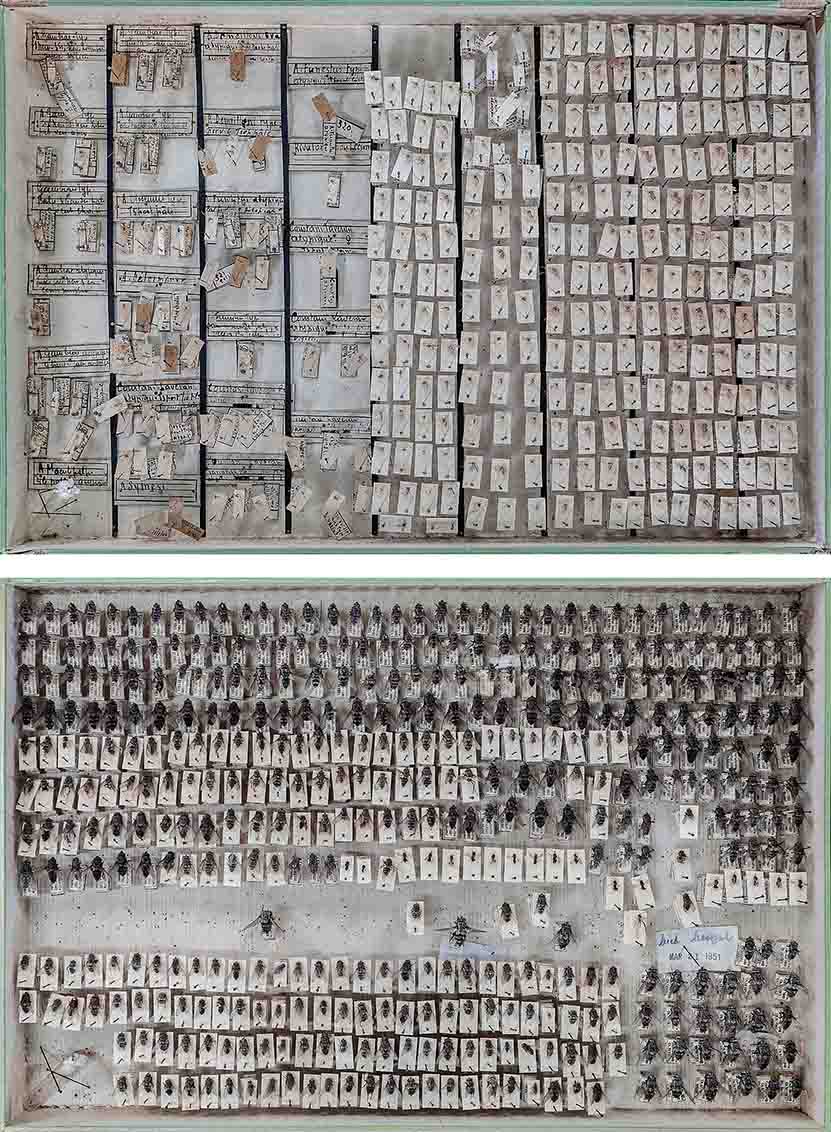

Essay on Urban Planning consists of 12 colour photographs, mixing past and present aerial views of Lubumbashi in the Democratic Republic of the Congo with entomological displays of flies and mosquitoes from the region. Between 1918 and 1951 in Lubumbashi, urban planning and inhabitants were subjected to a health campaign set up in the city to combat malaria. The aerial views of the city in Essay on Urban Planning show the separation between the urban centre and the peripheral suburbs by a strip of land — a cordon sanitaire — of about 500m wide, oriented according to the direction in which the wind blows. This was believed to be the maximum distance that a mosquito can travel in one go. Juxtaposing aerial views with panels of fly specimens, the work reflects how - under hygienic pretexts - these elements reflect the policy of the racial segregation of the colonial era. A 1929 archive photo installed to the right of the checkerboard of images completes the work, the photograph depicts two boys sitting in front of a pile of dead flies, reminding us of the practice that each worker had to kill 50 flies in order to get his daily food allowance. As such, the colonial narratives of the past are superimposed on the economic and ecological imperialism of today.
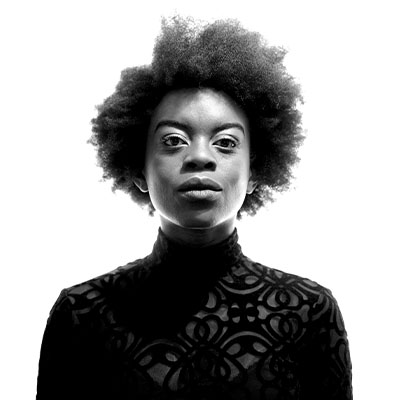


Sekai Machache
Zimbabwe



Sekai Machache
Zimbabwe
Body of Land: Ritual Manifestations
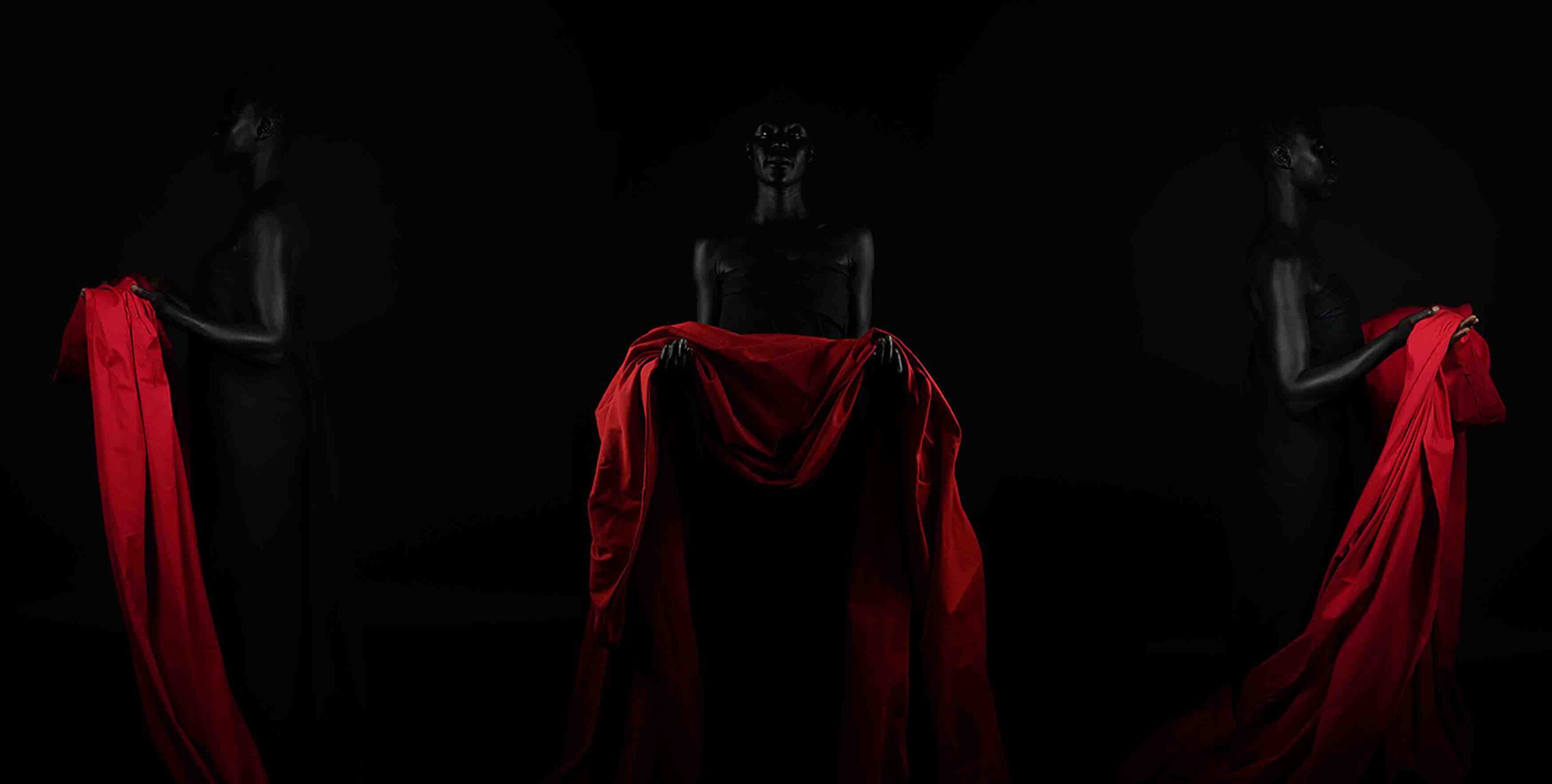

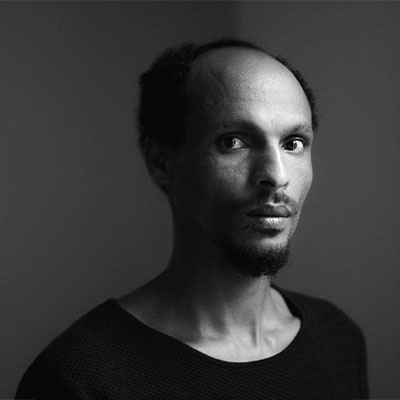


Sinaw Medine
Eritrea



Sinaw Medine
Eritrea
Les routes de l’exil
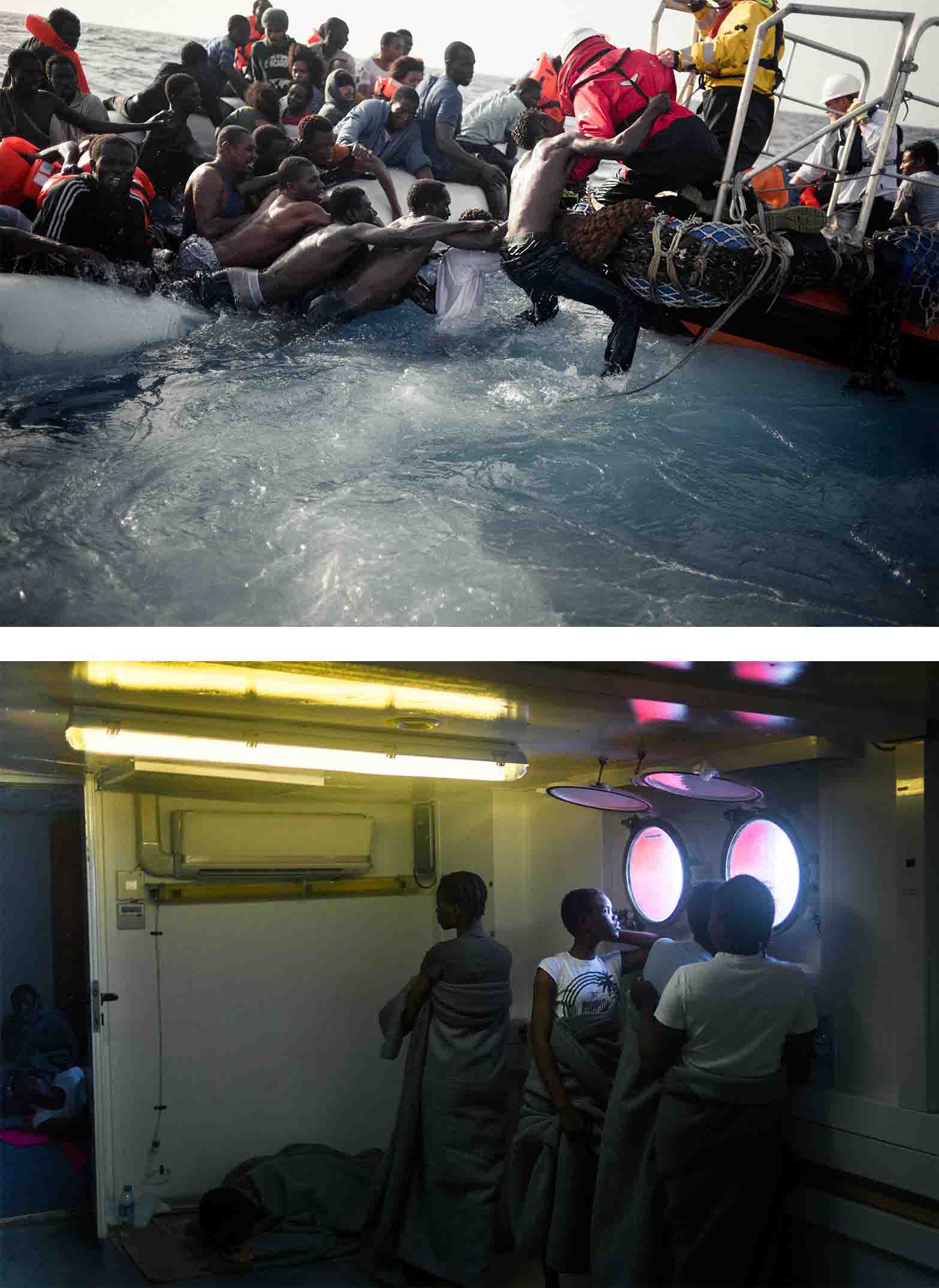

Part of a long-term documentary project on exile, this photographic investigation explores different stages of border crossing with the backdrop of the dangers faced on the roads to European borders. More than just a migration crisis, it is a humanitarian tragedy occurring in the Mediterranean and on European soil. Facing the inertia of governments and the tightening of migration policy, citizens are getting involved and organising to help exiled people, a commitment that reflects a duty of humanity. Onboard the Aquarius, a rescue boat chartered in 2016, humanitarian aid workers patrol the Mediterranean and operate rescue between Libya and Italy. Fleeing conflicts and instability, refugees will pay the price to recover freedom; in the conditions imposed by the smugglers, crossing the Mediterranean is dangerous, with many shipwrecks and numerous missing. Most survivors are still under post-traumatic stress after horrific abuses in Libya. After the crossing, the roads used by exiles in Europe remain dangerous, as the tragedies to reach the UK or the border Alps, where the right of asylum is often mistreated. In Ventimiglia, at the Franco-Italian border in 2015 when border controls within the Schengen area were re-established, hundreds of refugees found themselves trapped in a precarious and uncertain situation.
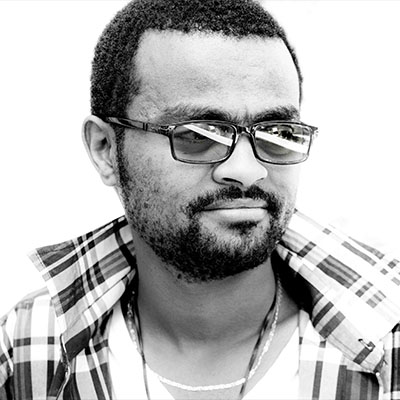


Tedos Teffera
Ethiopia



Tedos Teffera
Ethiopia
The Matrix Of Perception
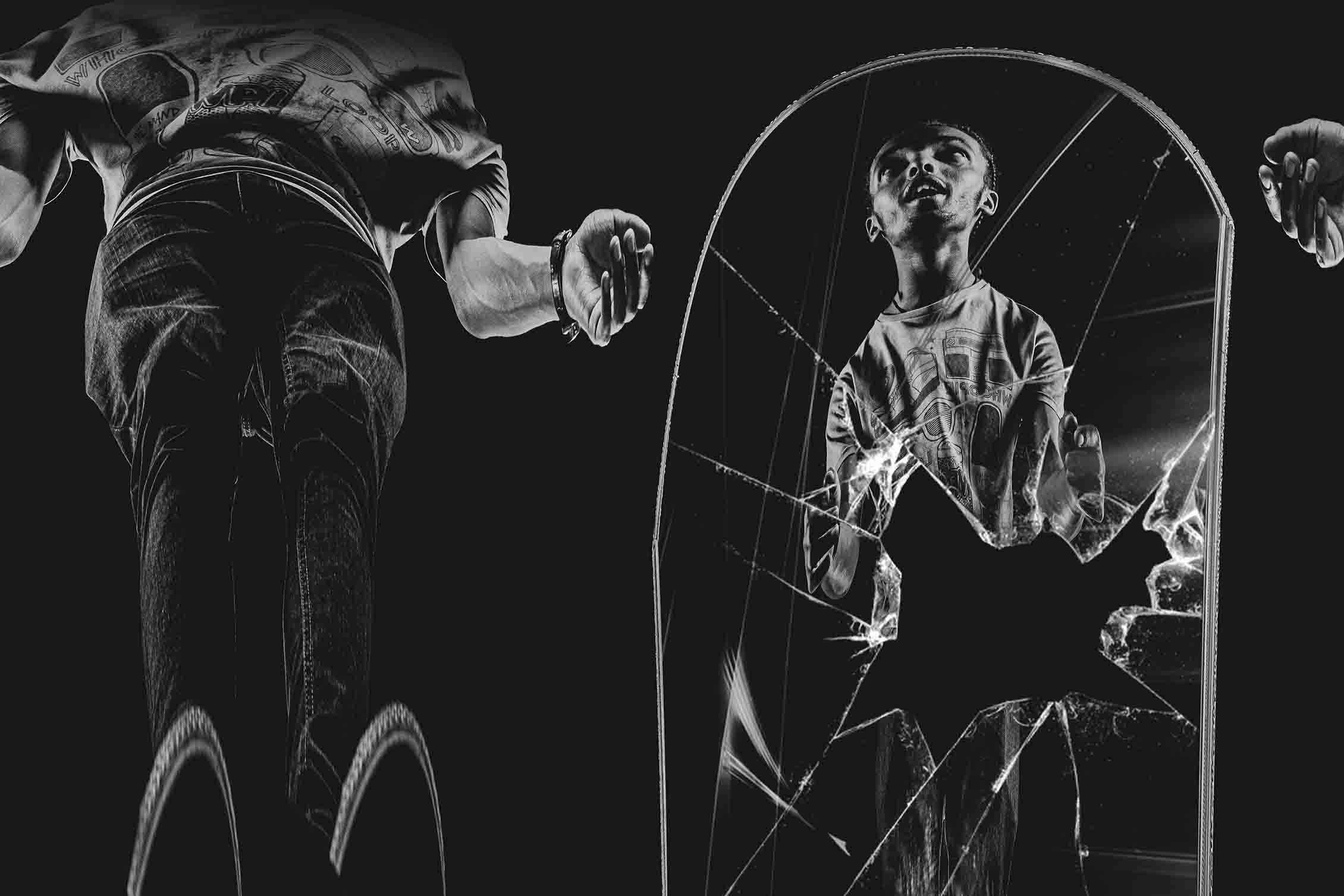

our perception has its own matrix. In the vault where our consciousness lies -- time is bent and thoughts take form. The process is individualistic but powerful In this realm you can be the creator and the prisoner.
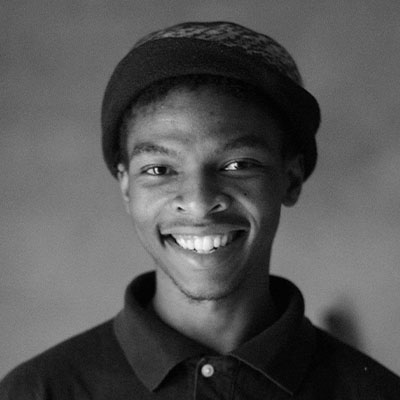


Thembinkosi Hlatshwayo
South Africa



Thembinkosi Hlatshwayo
South Africa
SLAAGHUIS
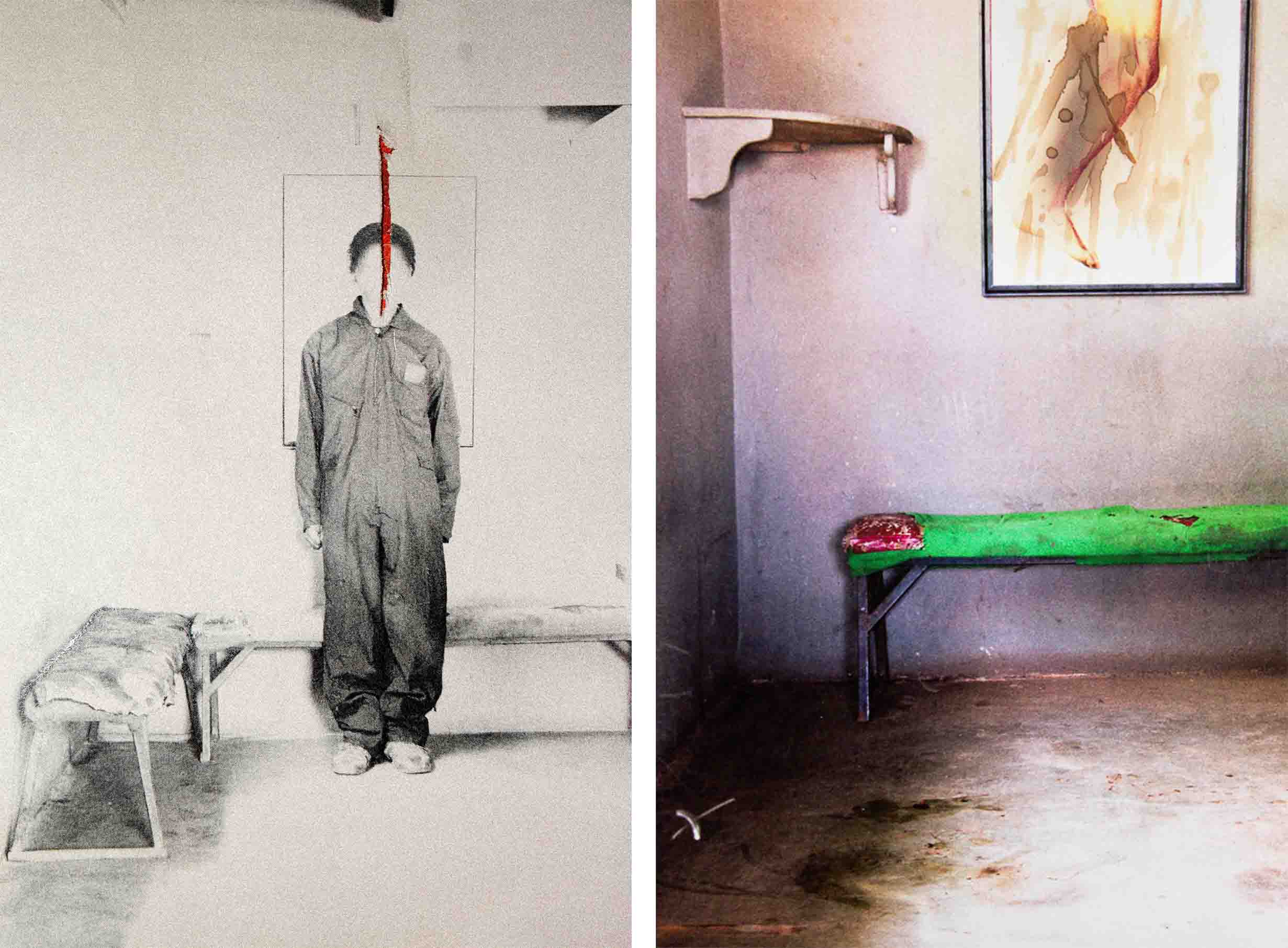

“My room is a mess. I can’t keep it tidy. I don’t try hard enough. I am ashamed. I am accountable. I am afraid. I am angry. I want out. I want to get bloody violent. Is it passed on? Is it intergenerational? I have a fear of being an adult with a really messed up room. Something's not quite appealing in that. Growing up in a home with a tavern, I have been confronted with realities that made me want to escape the space. A place of refuge or safe haven should have been my home, but it couldn’t be because it was the extension of the tavern. Maybe my mind – but it too was violated. It became a tricky escape. The violence and schizophrenia of a society would be enveloped in this one space. It was ‘my bread and butter’— it’s infamy coined ‘Slaaghuis’. Loudest in their silence, I confront the unresolved issues I have with the tavern. I confront my violated or perhaps traumatised mind. I confront the memory. A drunken violence. A drunken depression. A drunken fear. A drunken lust. A drunken happiness. A drunken abuse. A drunken love. A drunken rape. A drunken fuck. A drunken anxiety. A drunken death. Societal trauma. The personal is political. The microcosm is the macrocosm. And vice versa.”
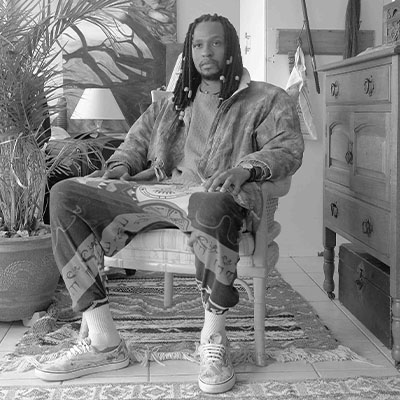


Tsoku Maela
South Africa



Tsoku Maela
South Africa
Barongwa: I am that I am
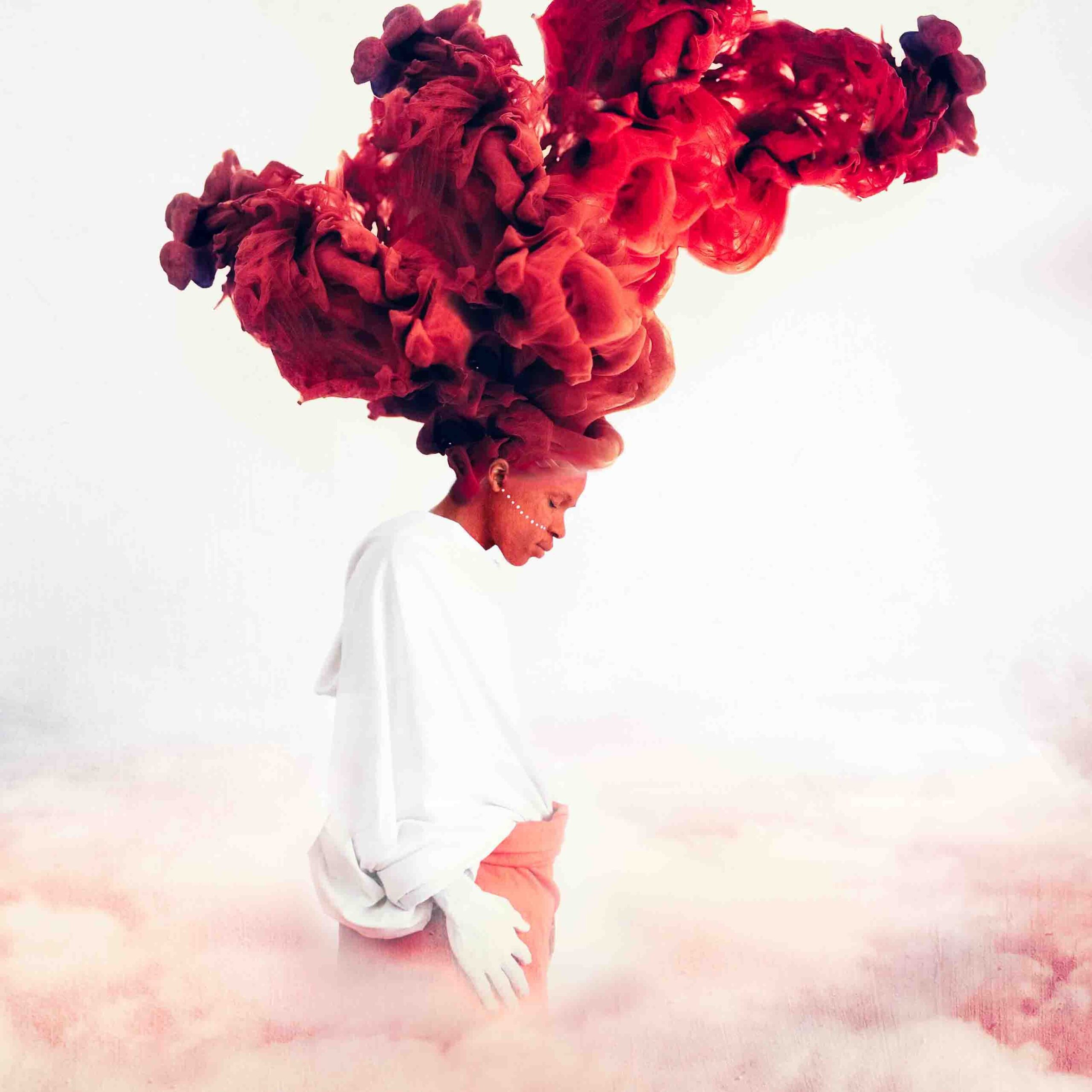

Barongwa is a word found in the Northern Sotho family of dialects in South Africa, which translates into guardians or angels, often used when referring to ancestral beings. It is the Sepedi customary practice to pay tribute and acknowledge the ancestors as our guardians and angels of the all-knowing God. In stark contrast to the Christian belief, to which many Sepedi people subscribe, dismisses the existence of ancestors and relegates them to “false gods”. Ultimately, one is not allowed to believe both stories, but is persuaded to choose, oftentimes in the favour of Western Christian belief. Barongwa challenges this line of thinking by combining stories from multiple beliefs, Christianity, Ancestral worship, Taoism and the gnostics, to find a divine message or the divine code embedded in the collective memory of each. From the Creation of Man being a combination of the divine feminine and masculine, to Anointing them with the gift that will allow the soul to face oneself through the state of Bardo before witnessing and experiencing their rebirth in the state Christ consciousness, the harmonious balance between mind, body and soul. The newly actualized self no longer sees themselves separate from the ya ́ ng part of God (or the source), but perceives themselves as an extension and of the same fabric as ya ́ ng God. They too are creators of worlds and destinies, guided by the divine collective memory that manifests through their intuition. I attempted to think, not of the human, but the African human. The melanated human. How our thinking of ourselves, our feeling of ourselves, our speaking of ourselves and indeed the God within ourselves has been corrupted into a white God. Barongwa takes place in the light. Yáng. It is a process of awakening. An awakening to the God in us all. An awakening to our higher self. A rewriting of the collective African consciousness.
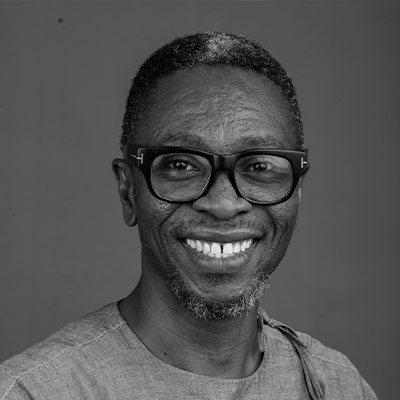


Uche Okpa-Iroha
Nigeria



Uche Okpa-Iroha
Nigeria
The Plantation Boy
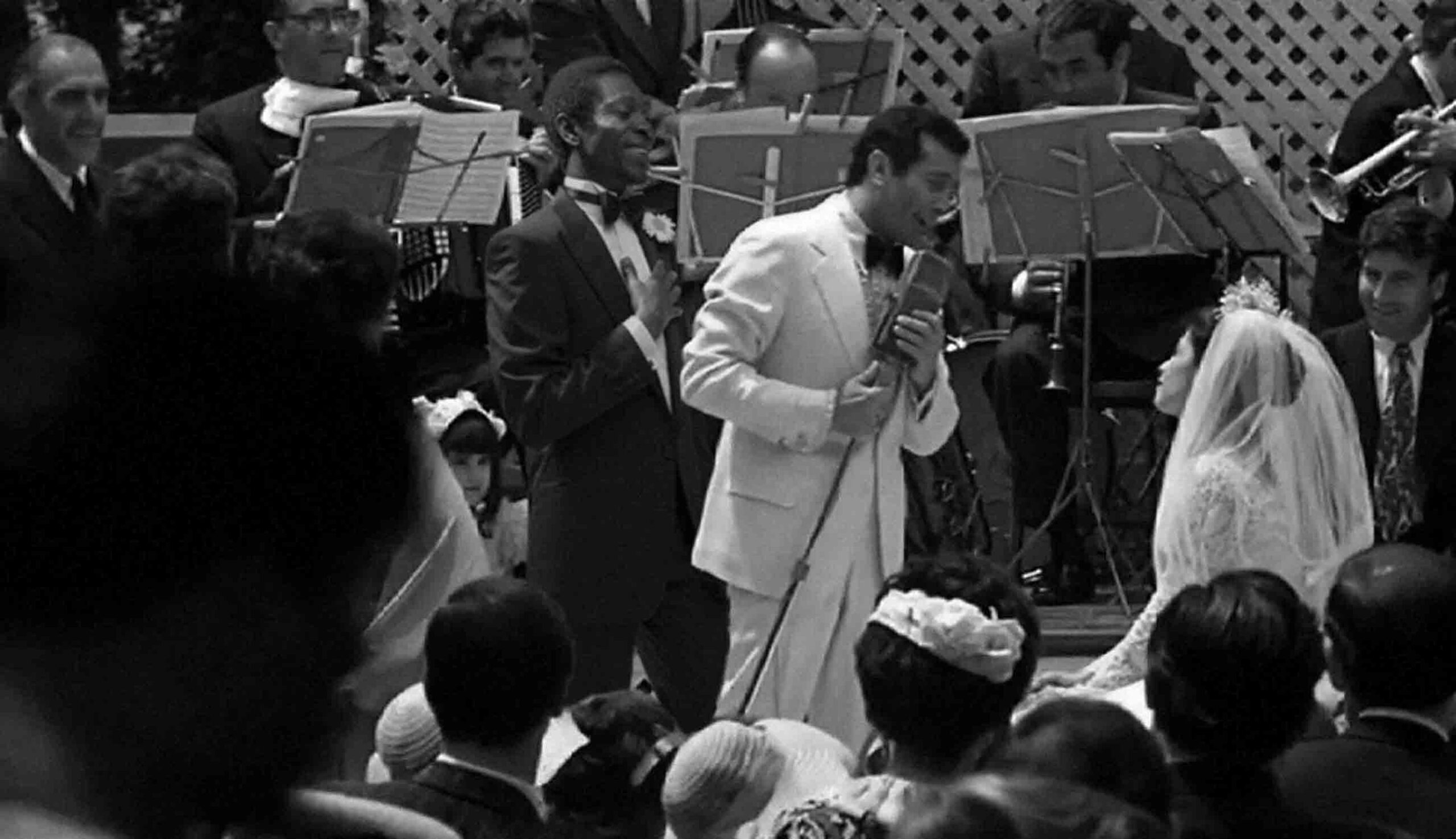

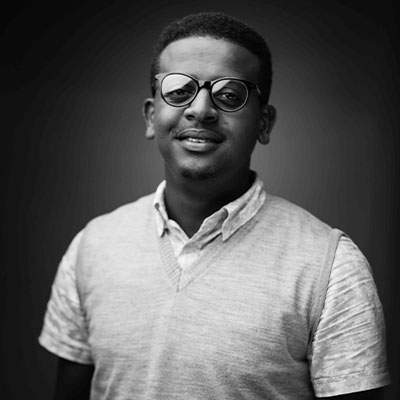


Yafet Daniel
Ethiopia



Yafet Daniel
Ethiopia
The Believers II
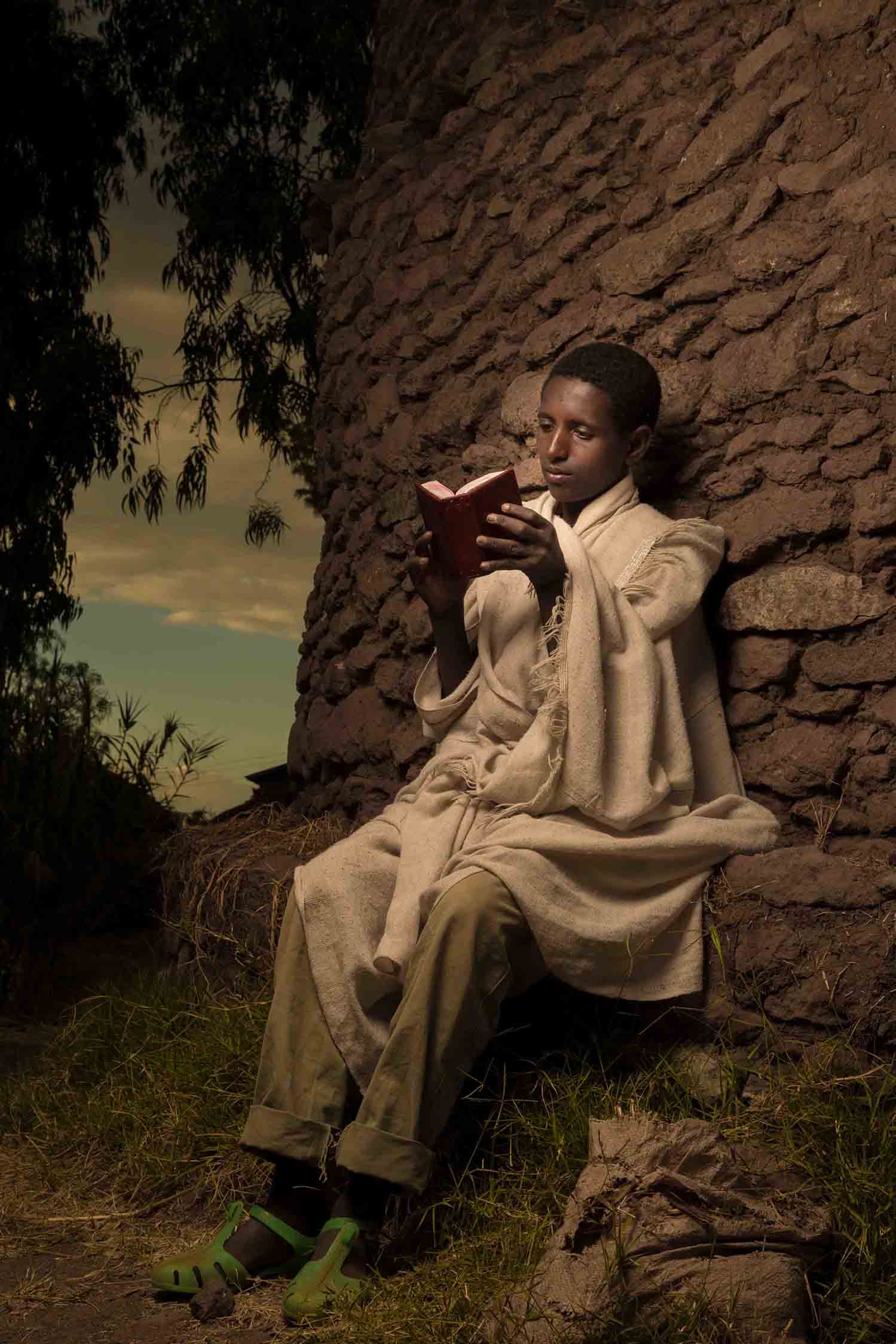

Yafet explores the life of religious students of the Ethiopian Orthodox Church, locally known as ‘Ye Abenet Temariwoch’ who travel long distances from their homes to attend classes in remote monasteries, learning the secrets and bases of the Church. The collection looks at the students who - despite completing the hard training - may not necessarily become deacons or priests.
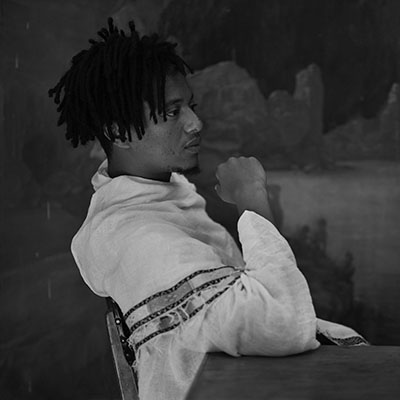


Yonas Tadesse
Ethiopia



Yonas Tadesse
Ethiopia
Finding Meaning in Pandemic
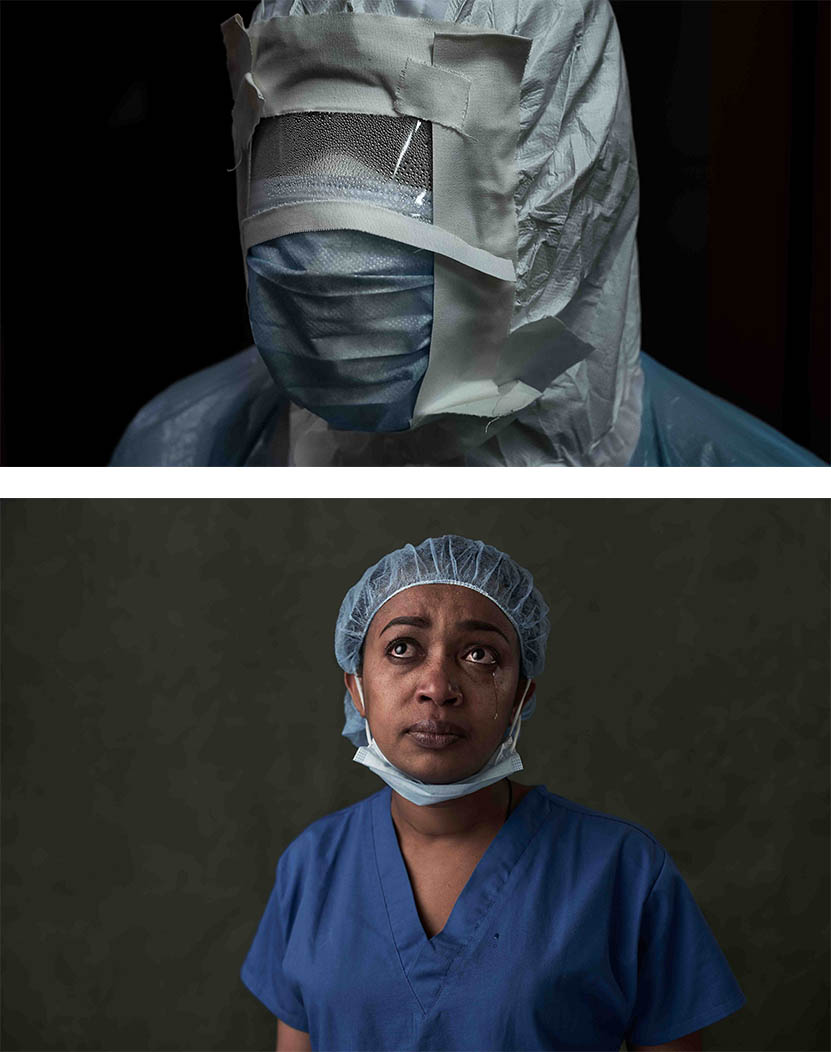

The first case of COVID-19 was reported in Ethiopia on 13th of March where a team of first responders took in a 48-year-old Japanese man. Having never seen anything like this in their lifetime, they did not know what to prepare for and thus started their new normal of battling the Corona Virus in Ethiopia. Doctors, nurses, janitors, security guards, drivers donned hats they’ve never expected to uphold and they worked to make up this moving machine at the cost of their health, their families, their reputations and of course, their lives. Patients find themselves uprooted from their normal day to day and into this fight for their lives where they often contemplate existential matters and try their best to hold on to hope despite everything.Patients and medical personnel alike try to find comfort in one another during this trying time, making family of one another as they leave their real families behind for their own safety. All sense of purpose evaporates in these rooms where terrified patients and helpless doctors try to save the day. No one knows where this will go and yet they will all tell you, as if they’d previously practiced together, that they must be there for a reason. And they try their best to make it a worthwhile reason. These are the heroes of the pandemic.
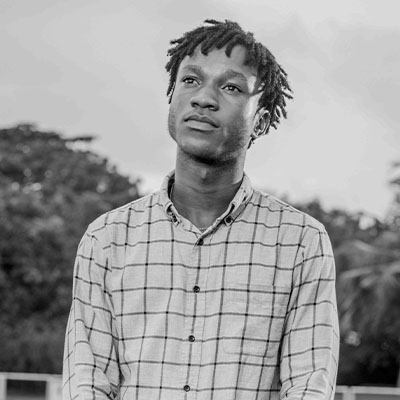


Zahui Yvann
Côte d'Ivoire



Zahui Yvann
Côte d'Ivoire
The Memory Of The Nomad
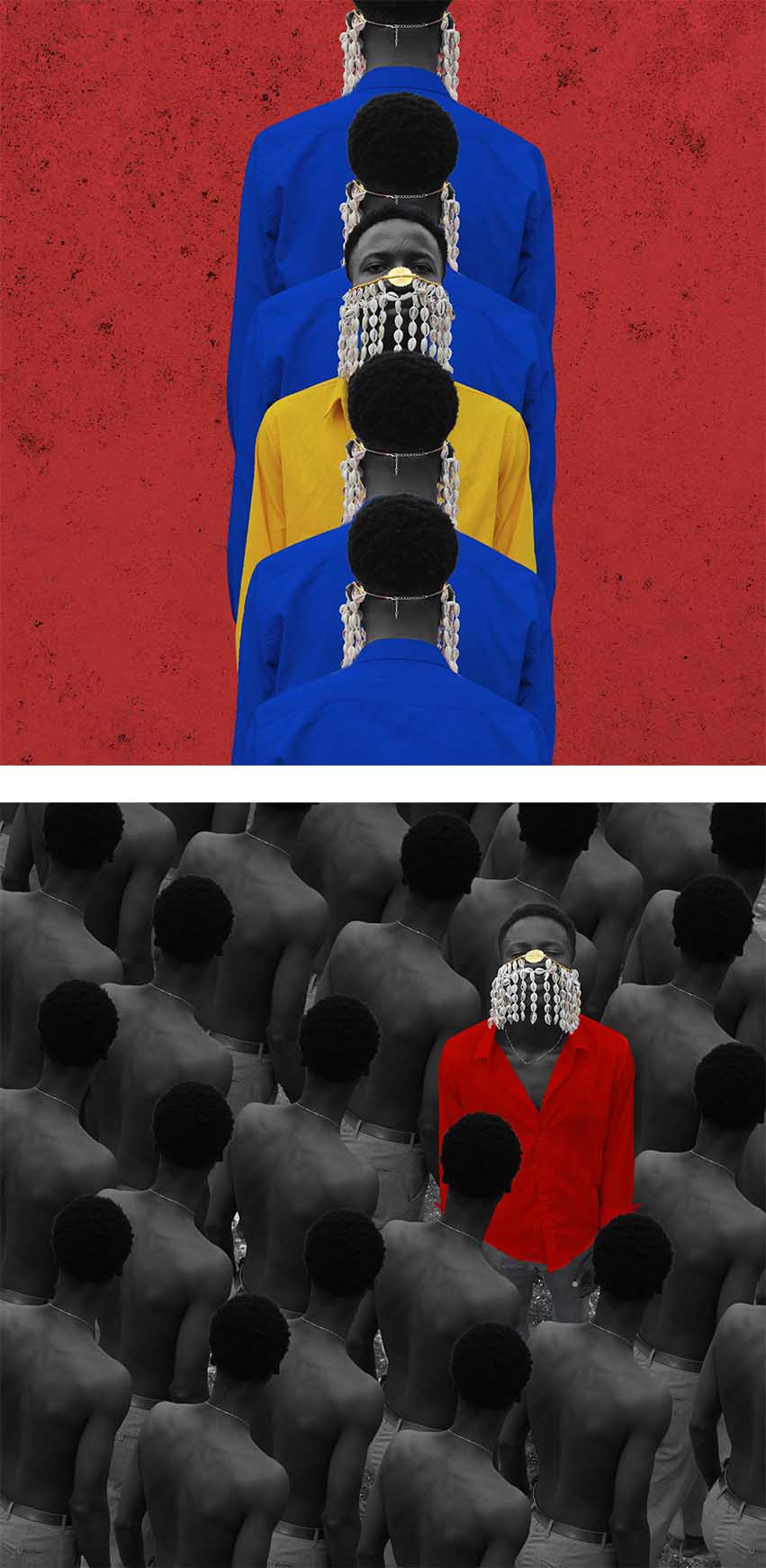

To be a nomad is to be free. To be a nomad is to recenter the important things in our lives. During our journey on earth, we have good and bad moments we want to remember. The thin line that holds us together is our Memory. Which means we can all Identify ourselves as Nomads.

